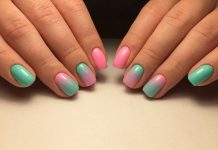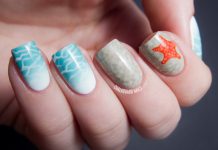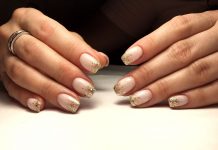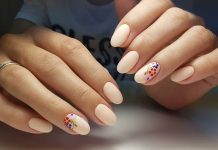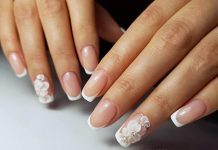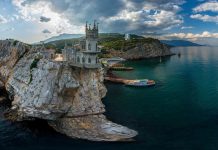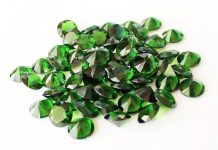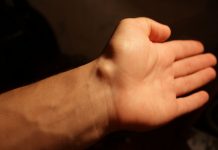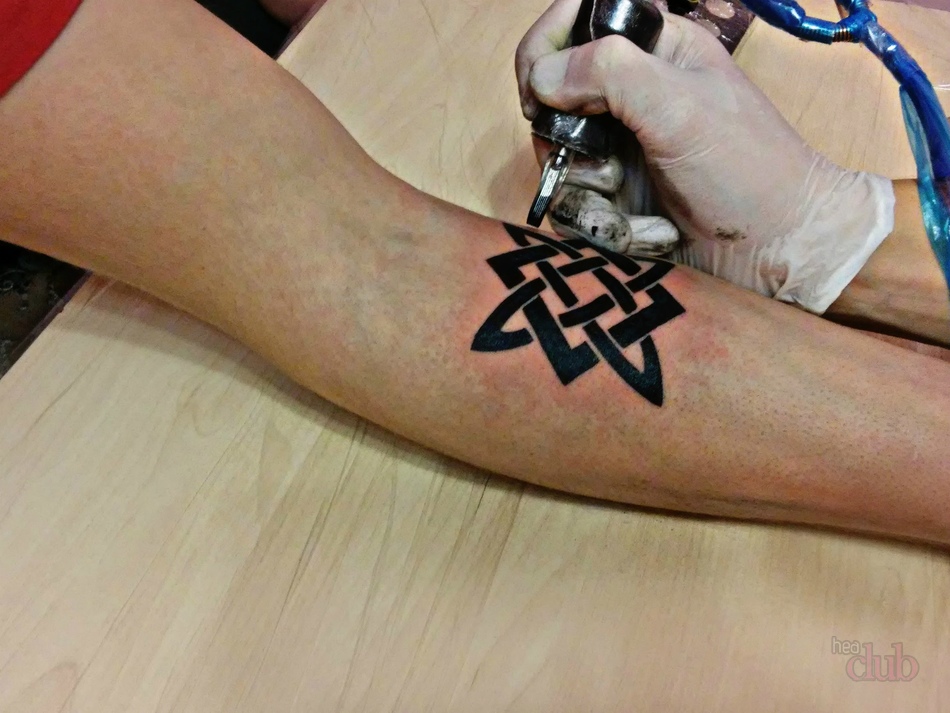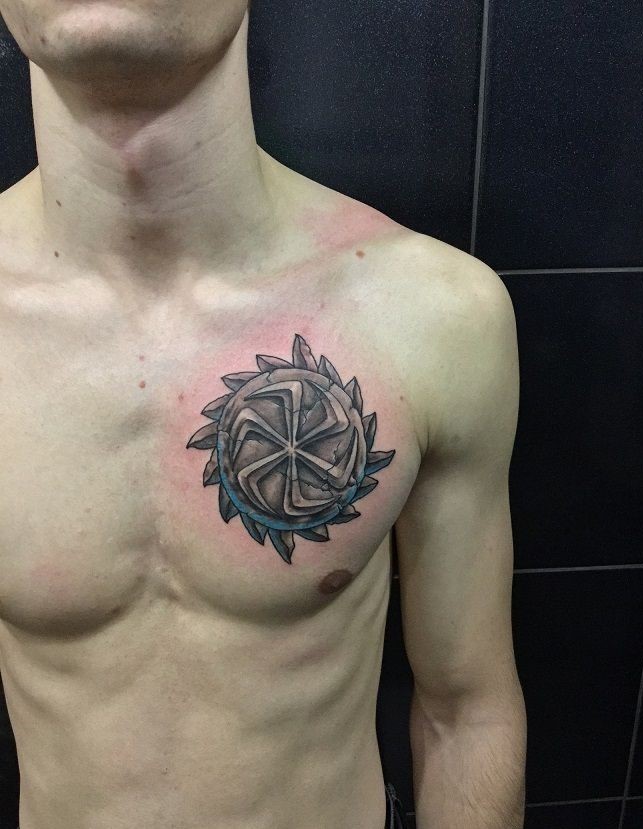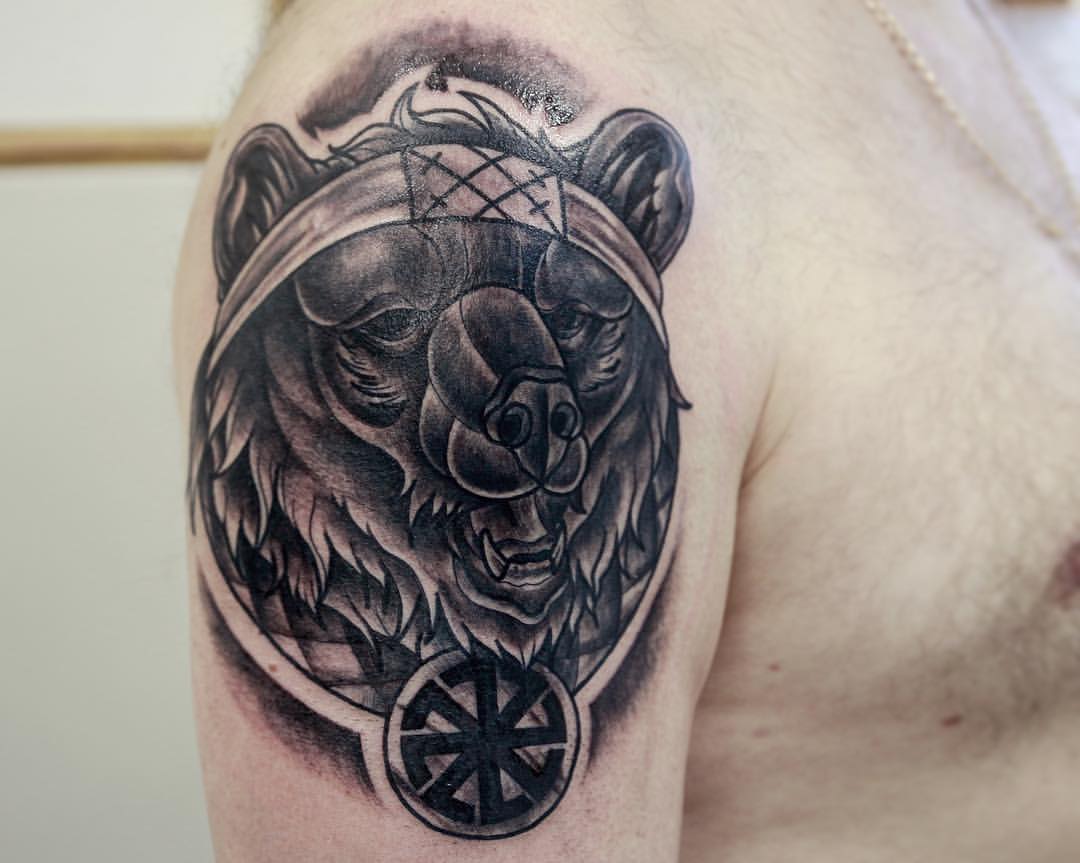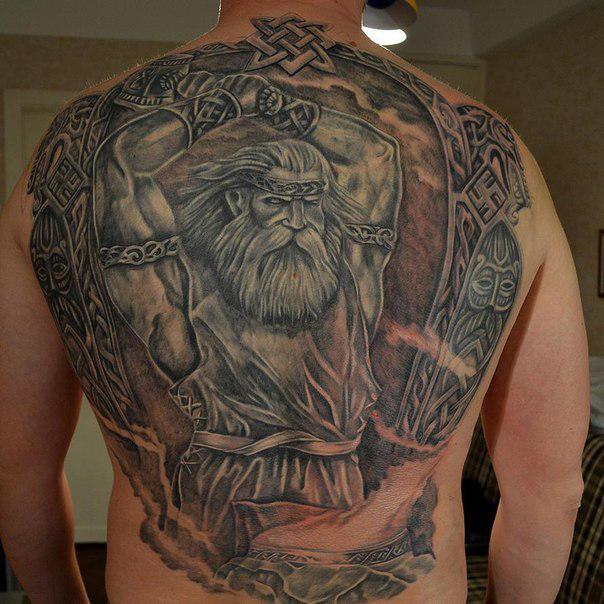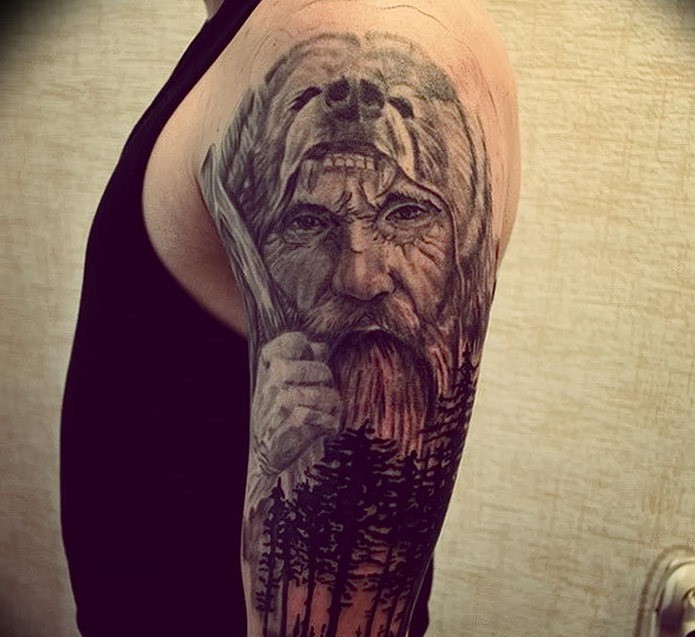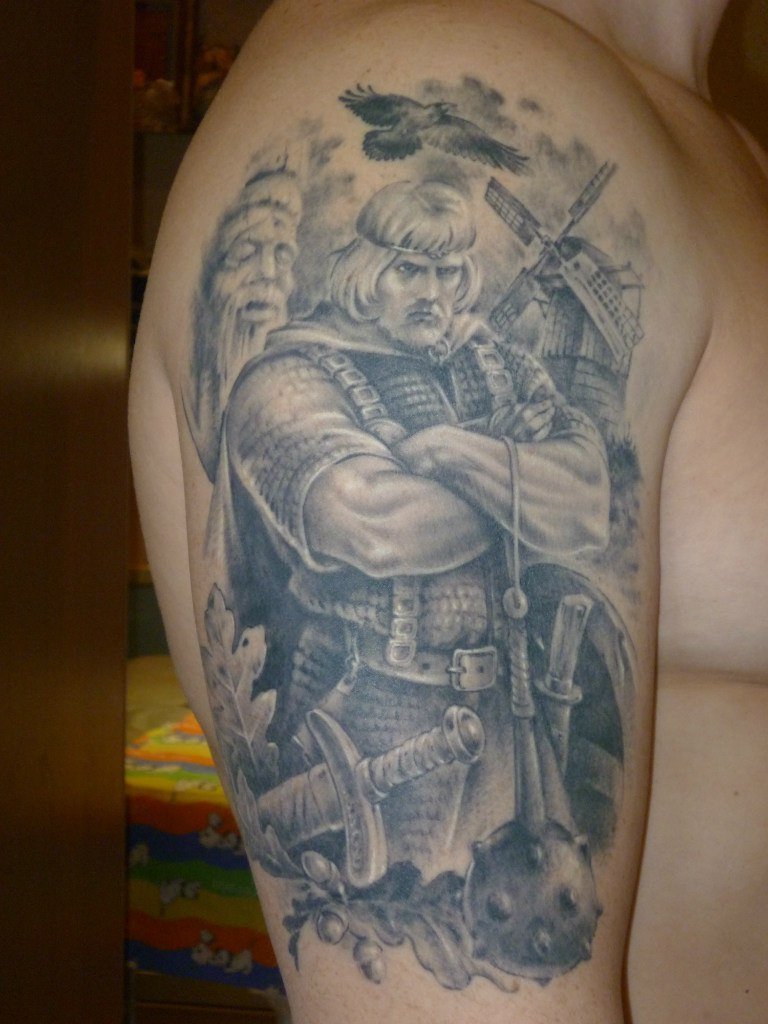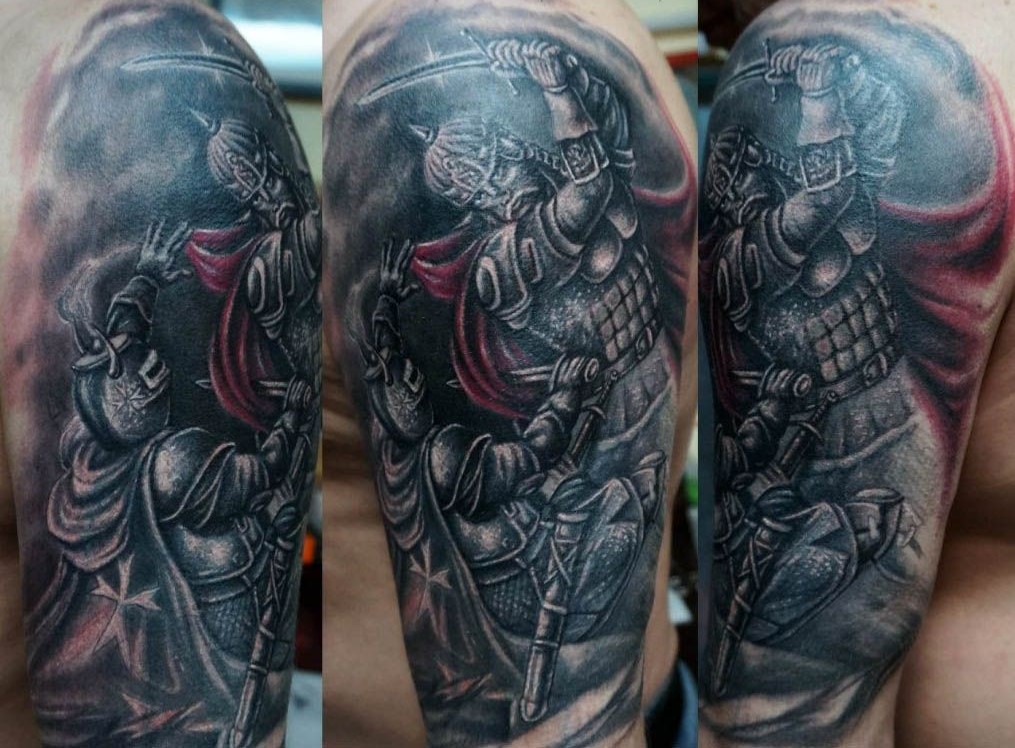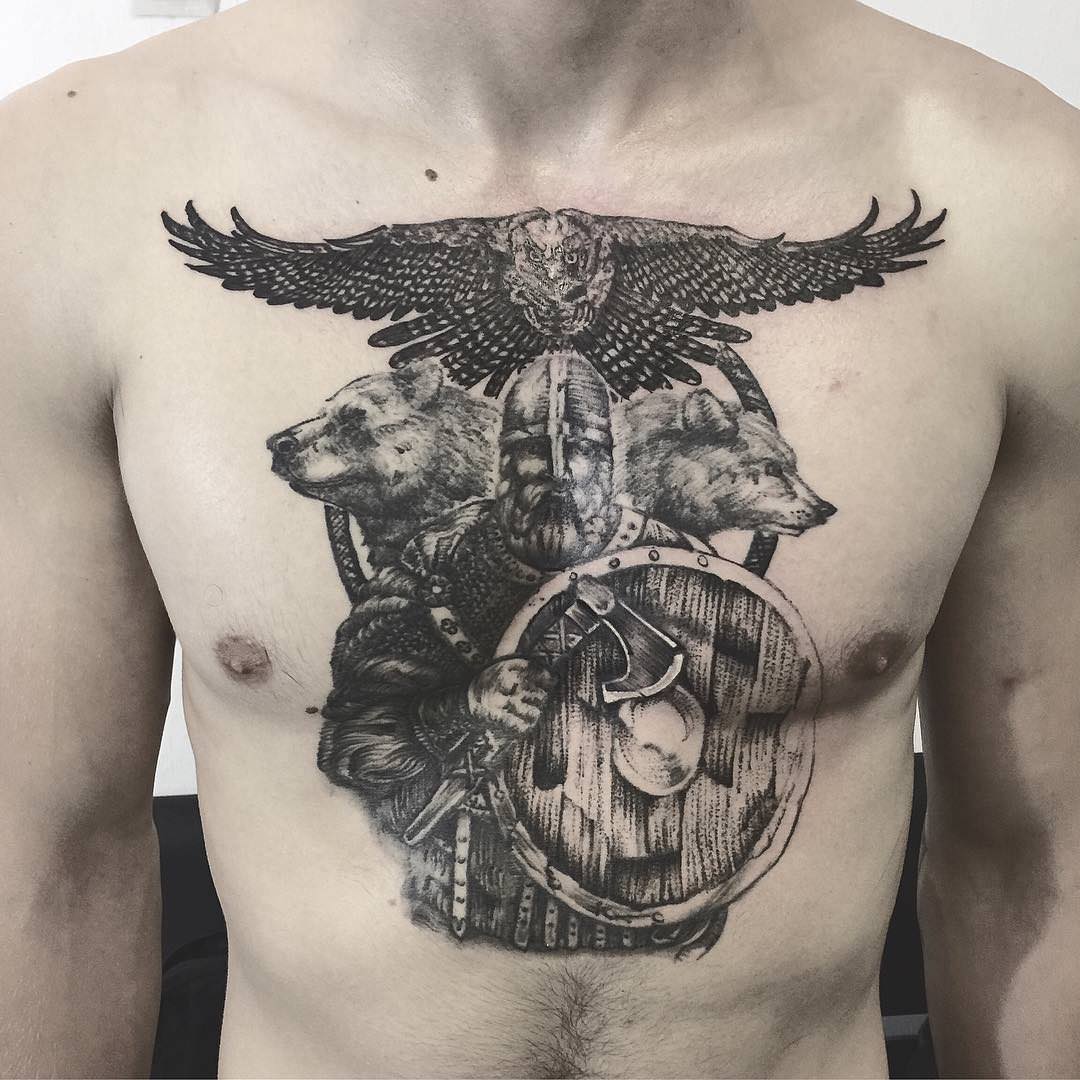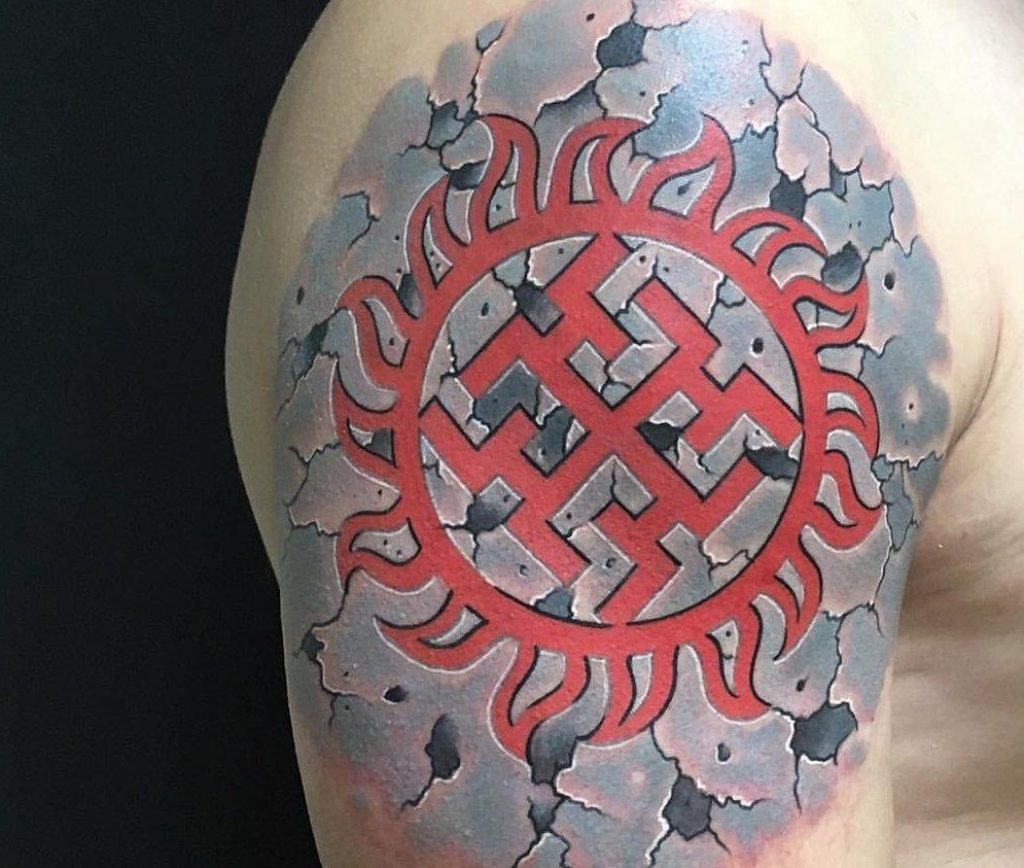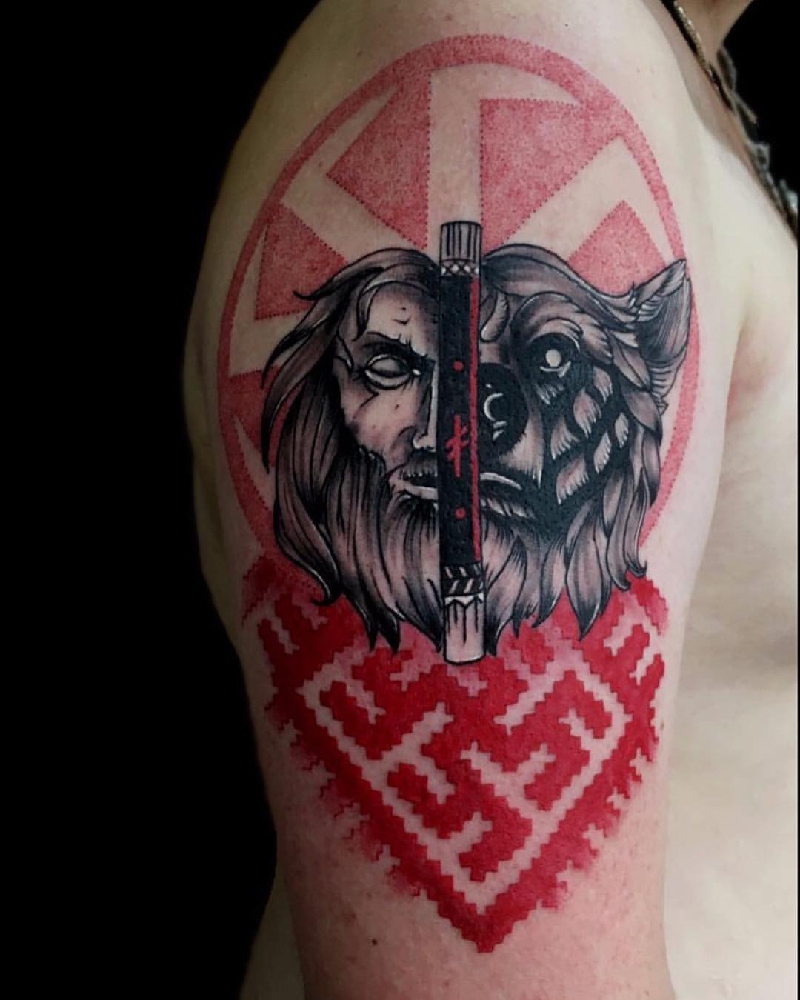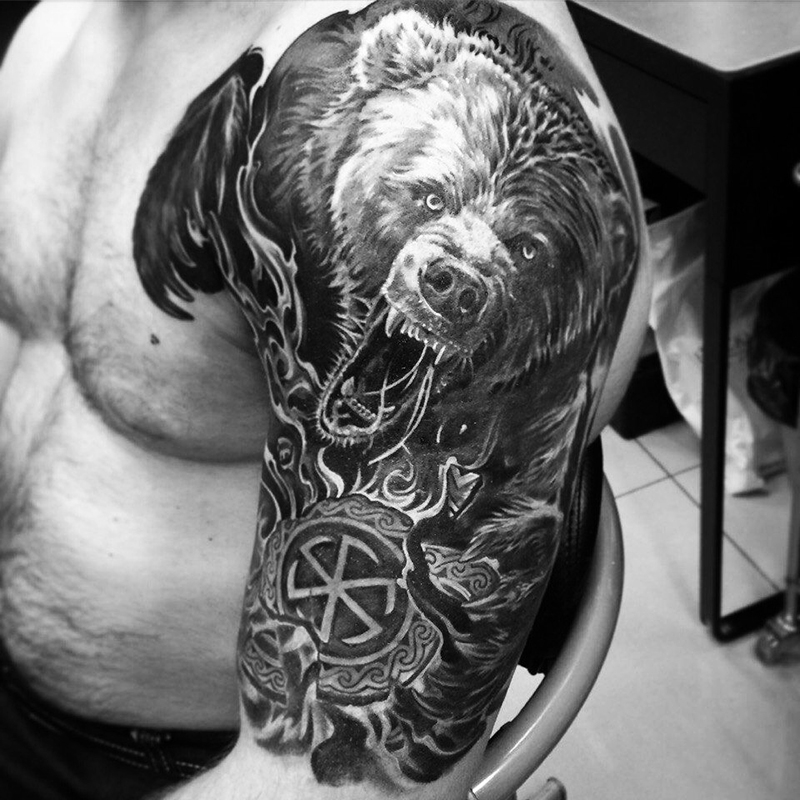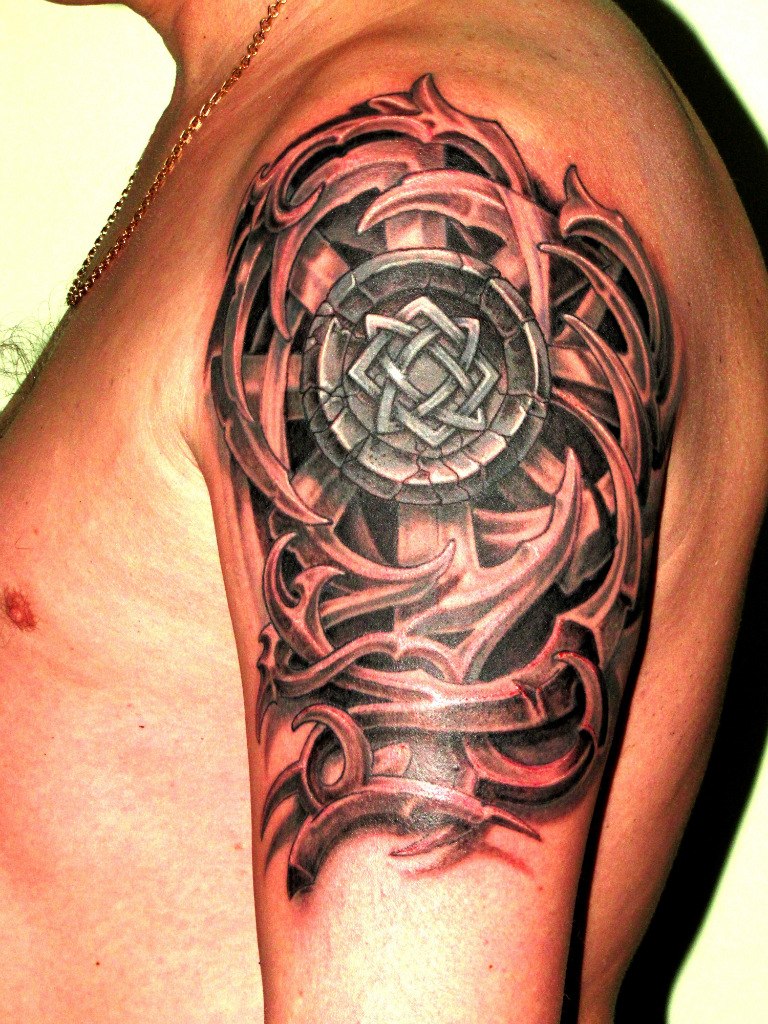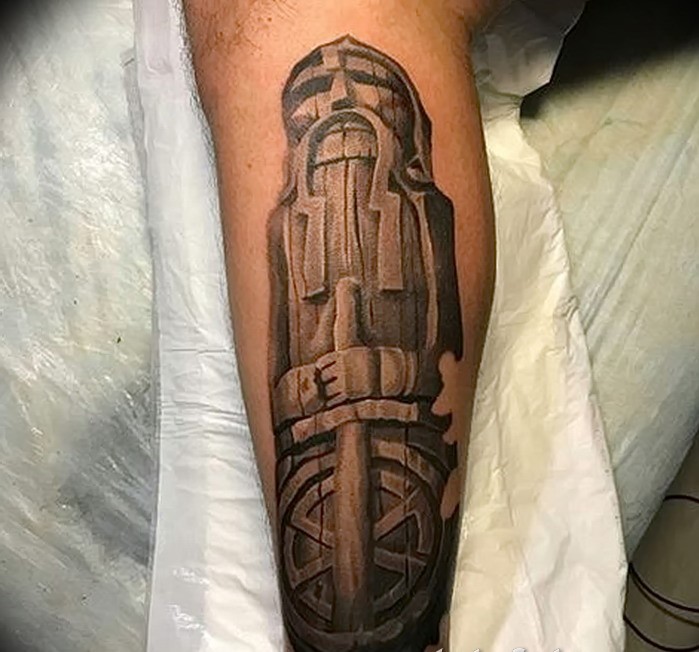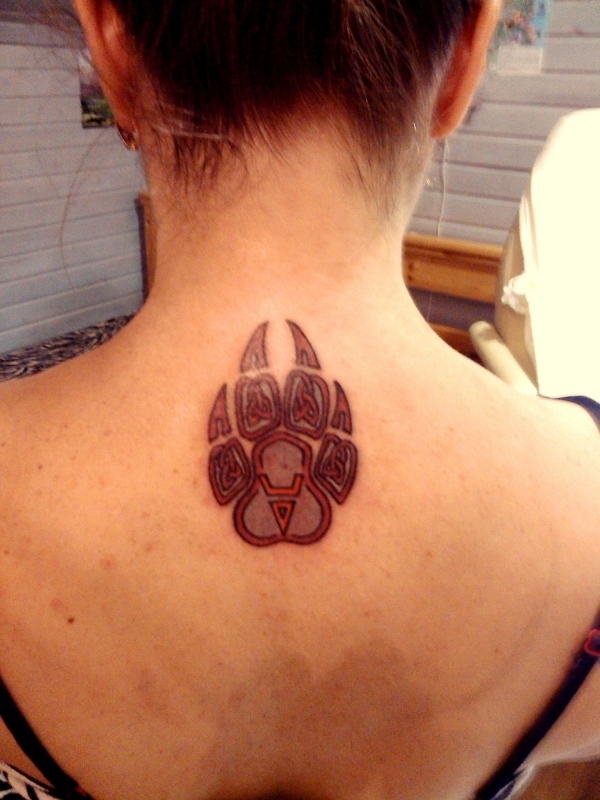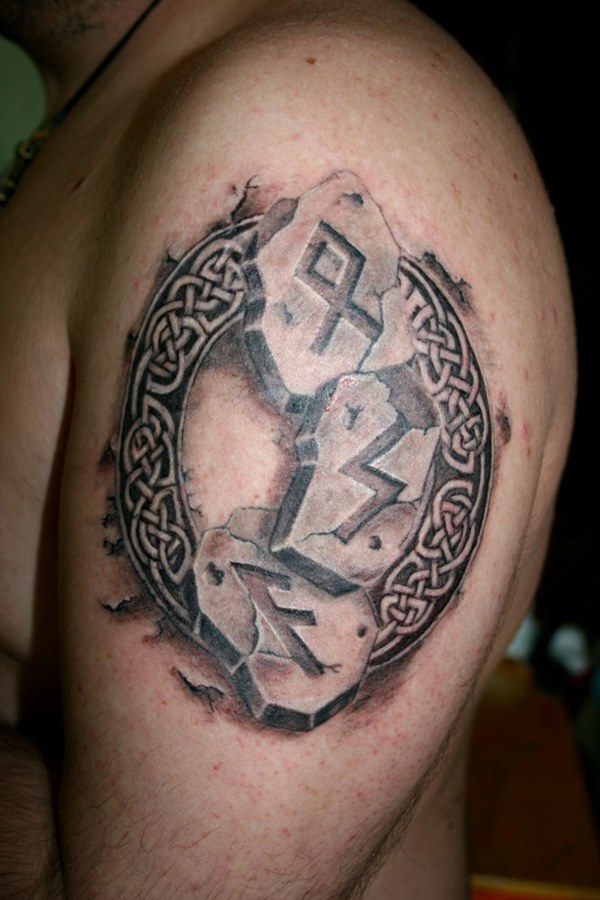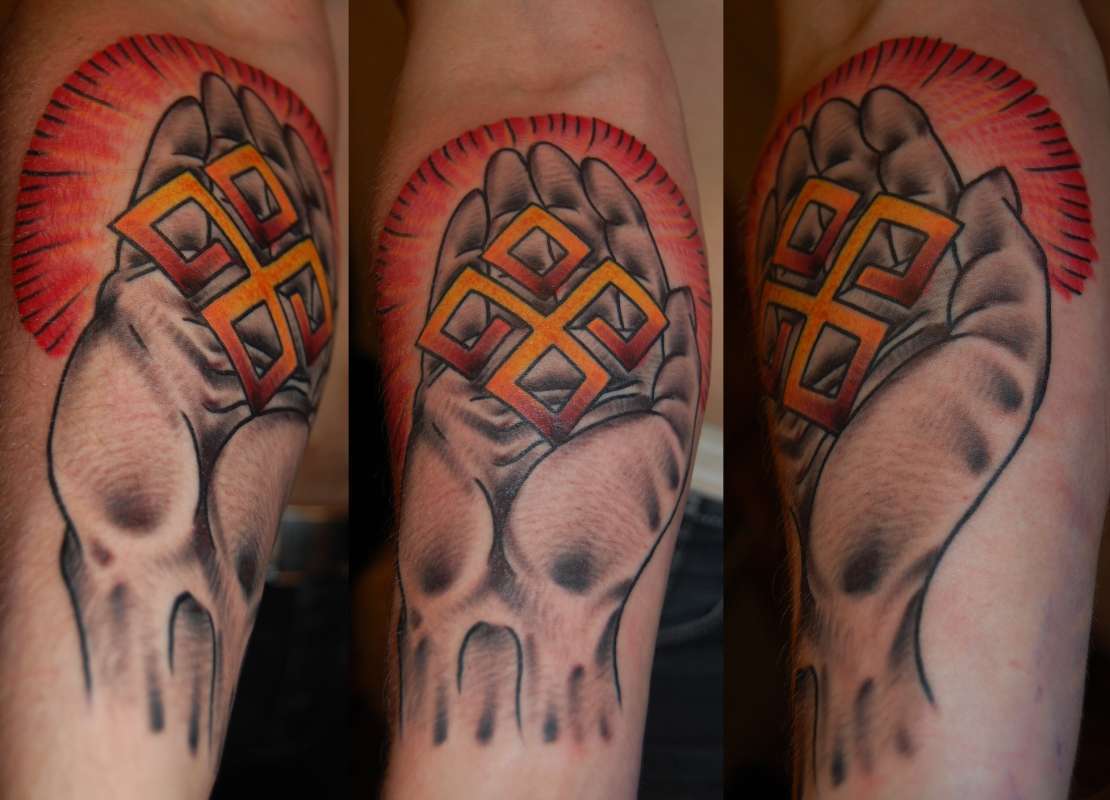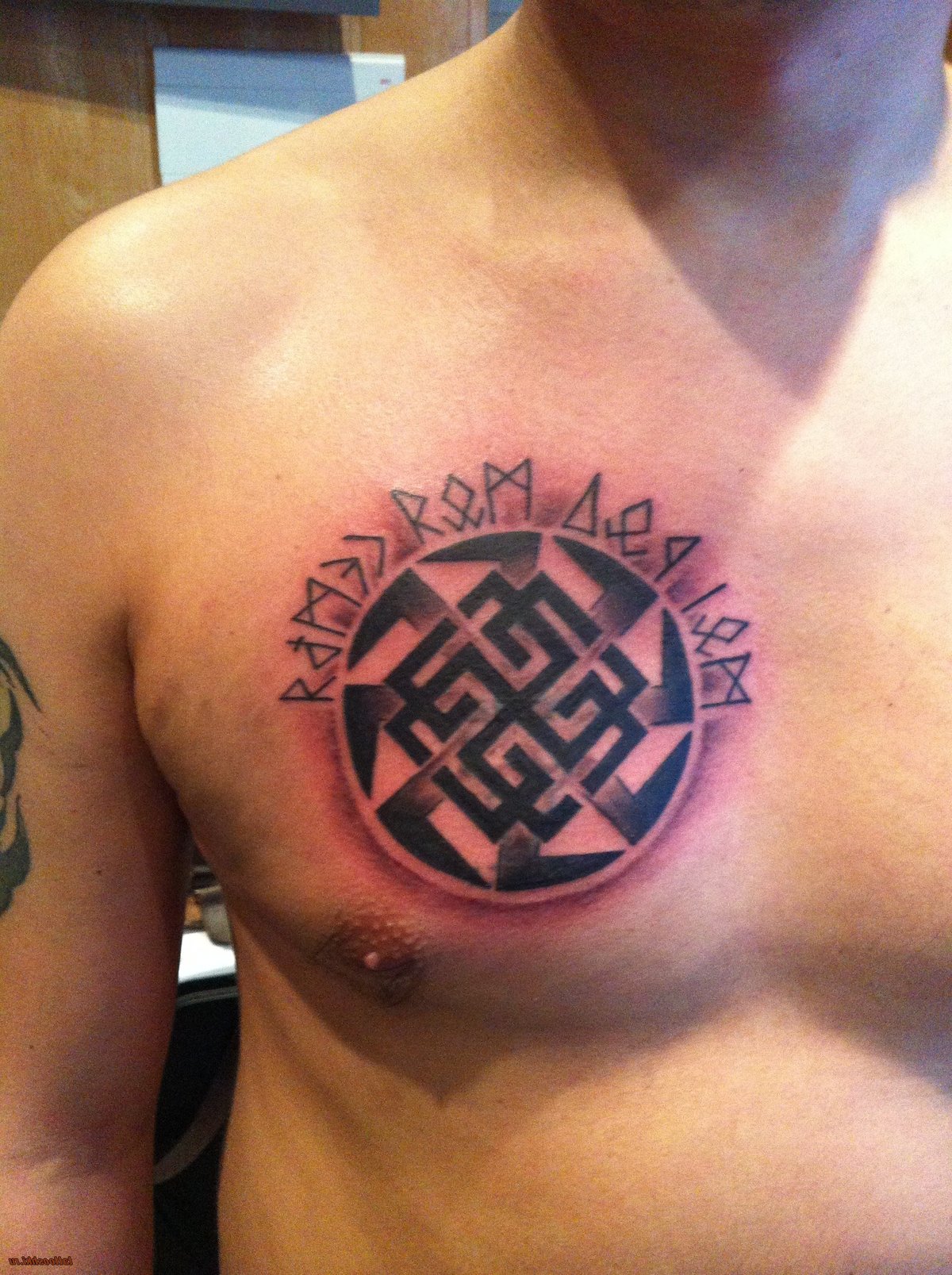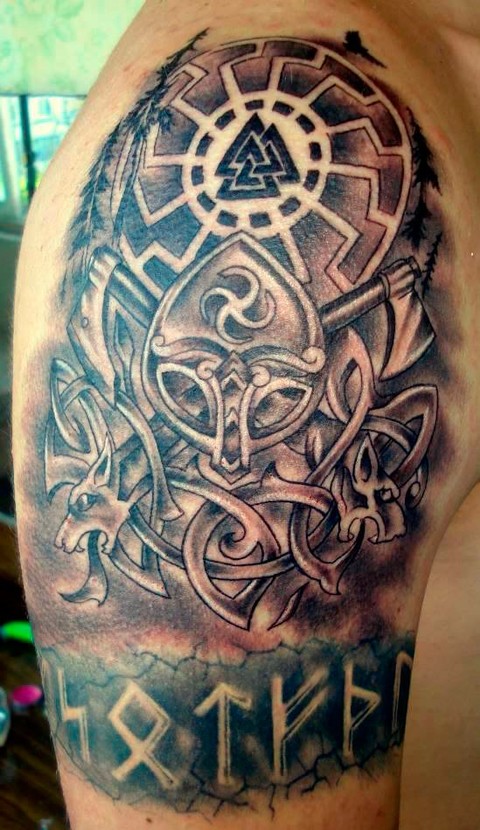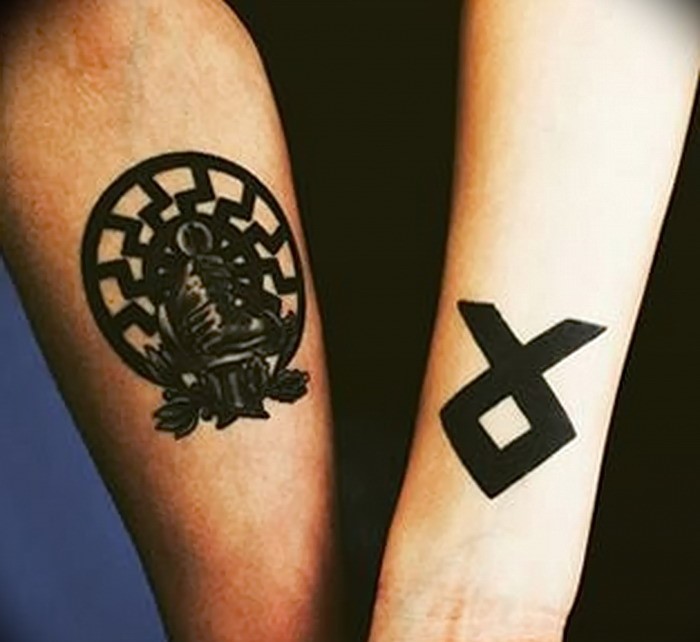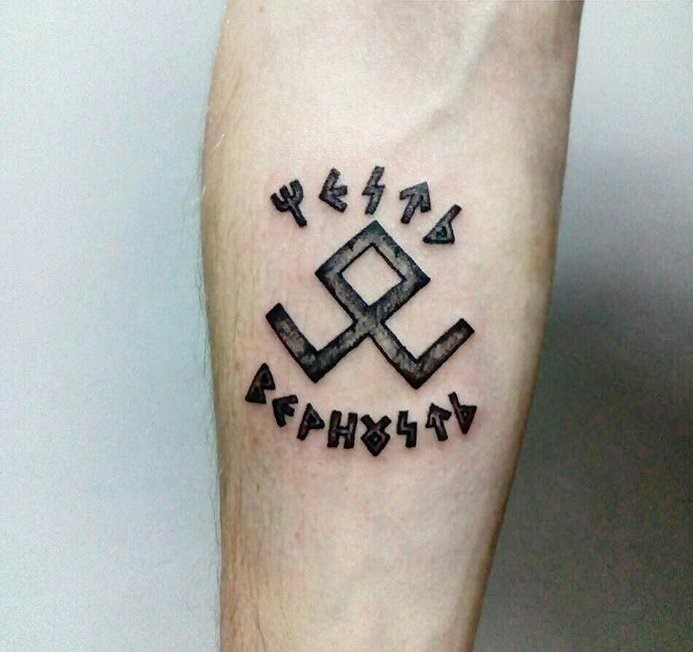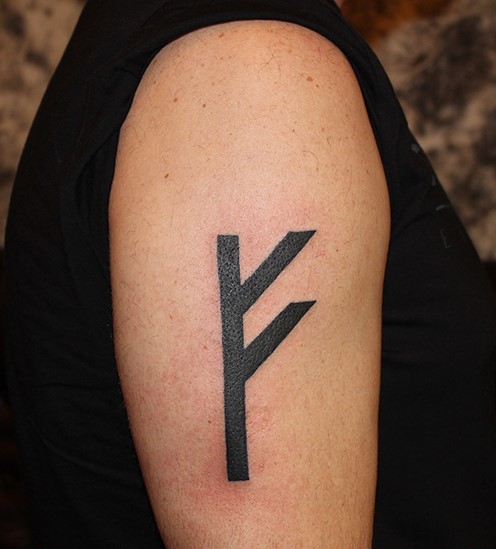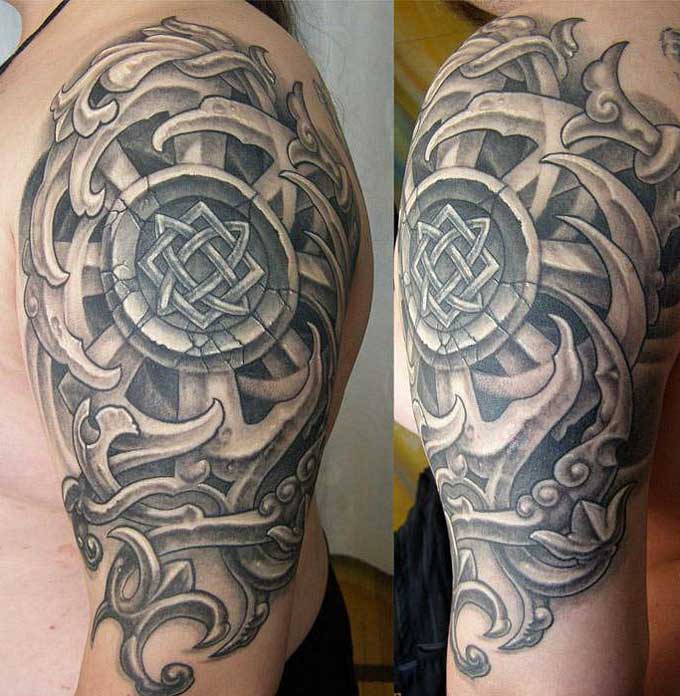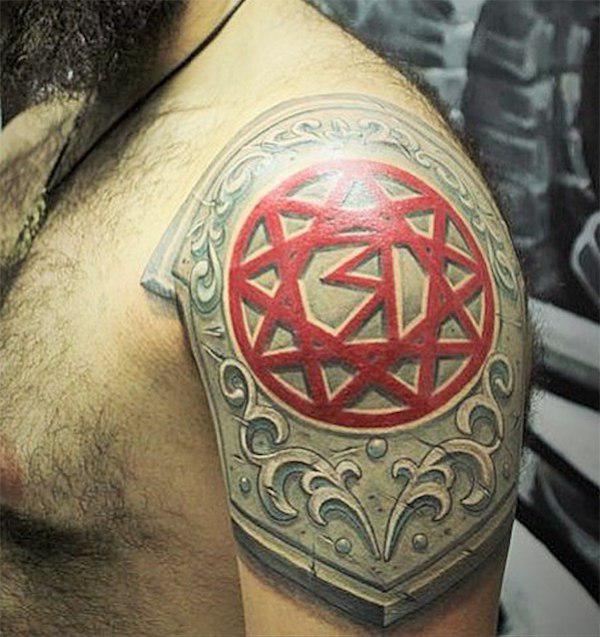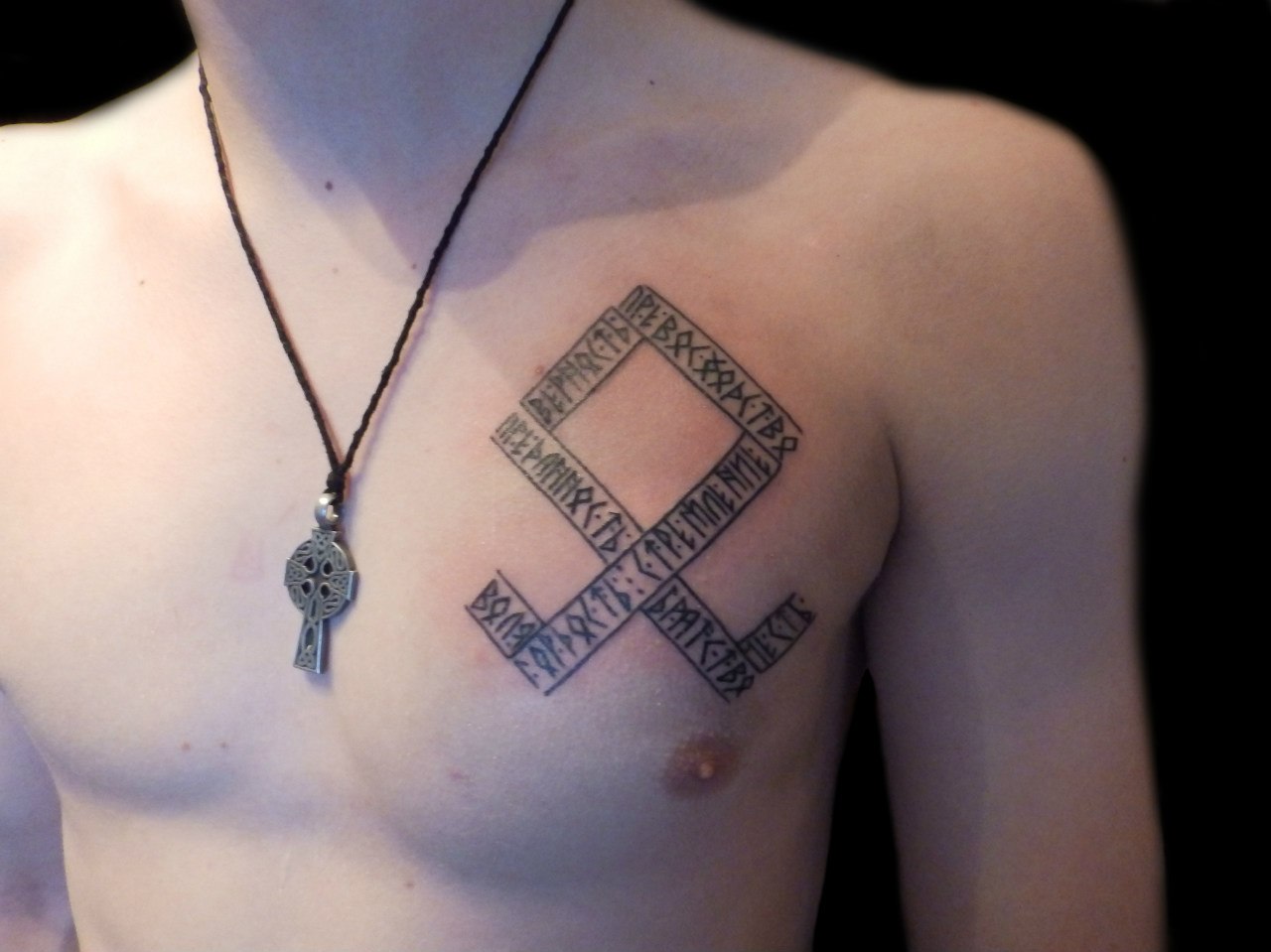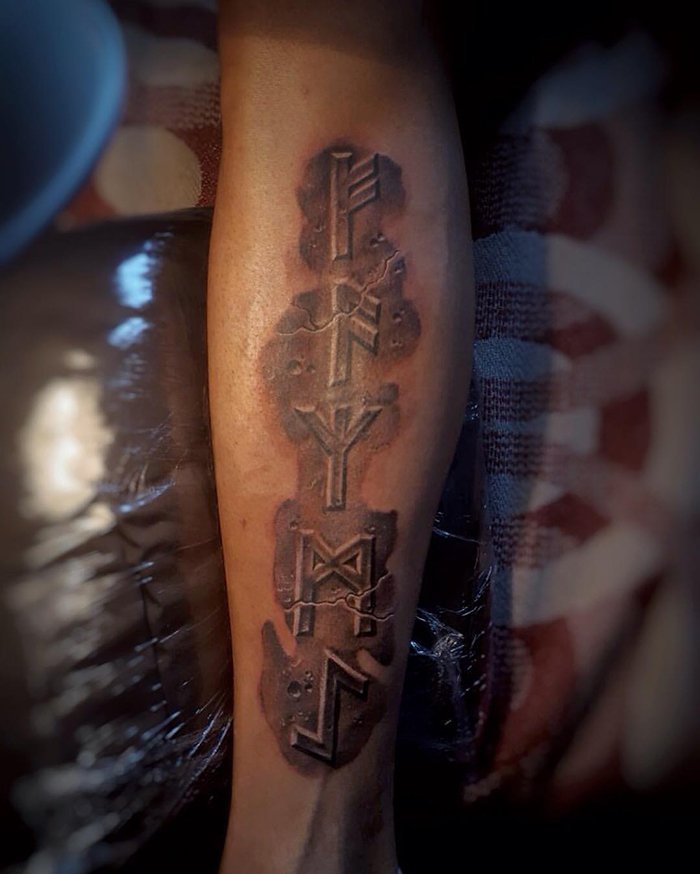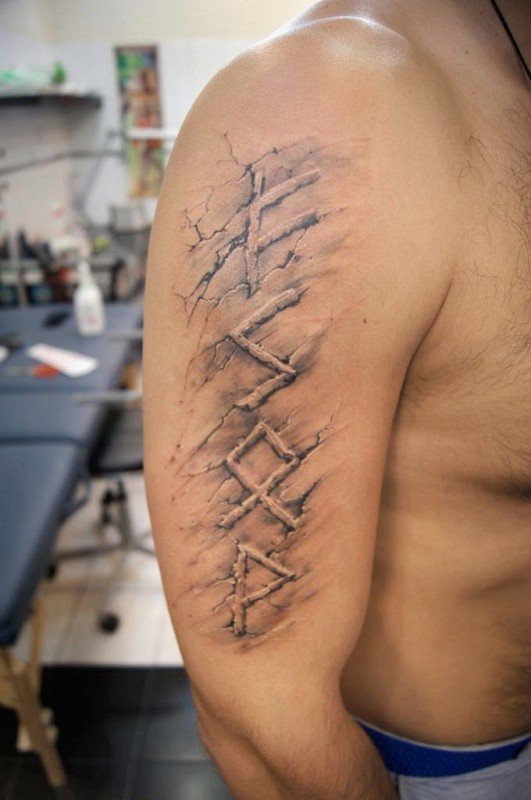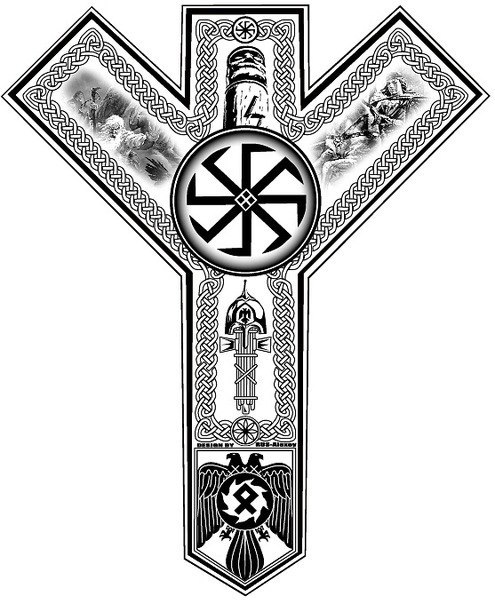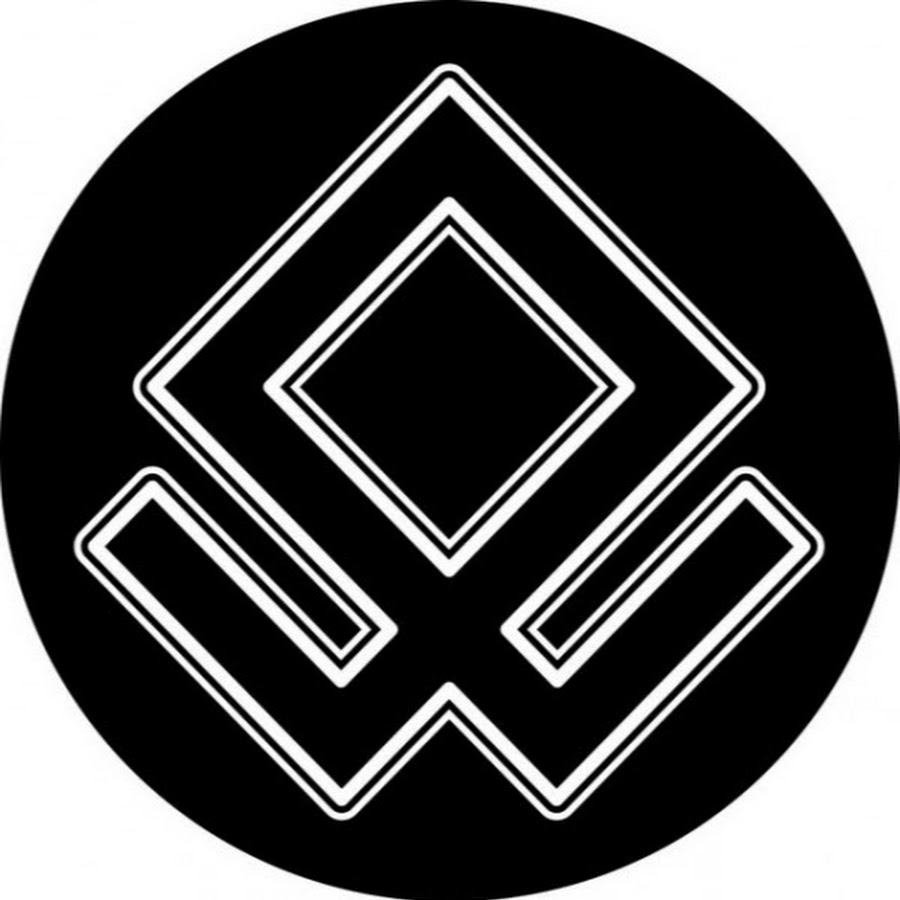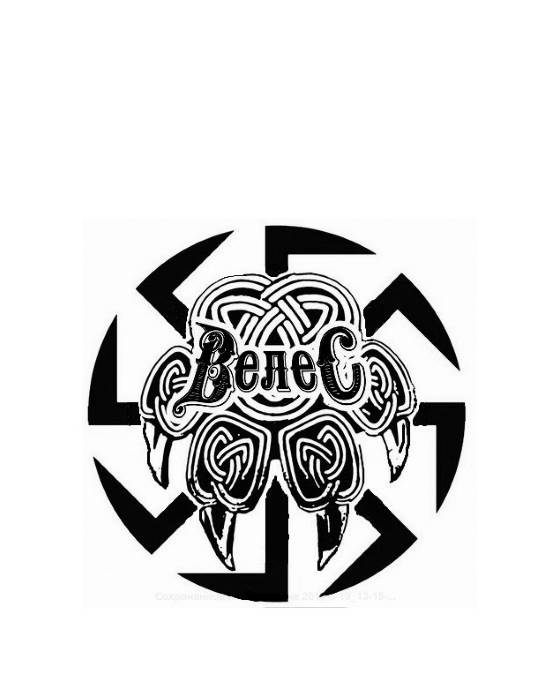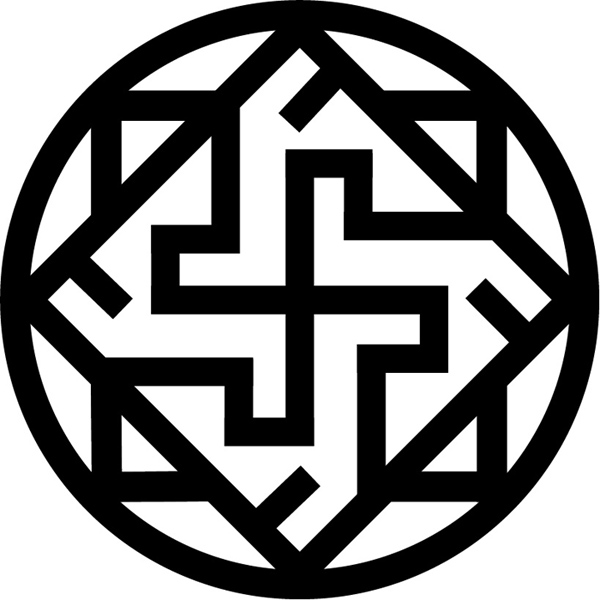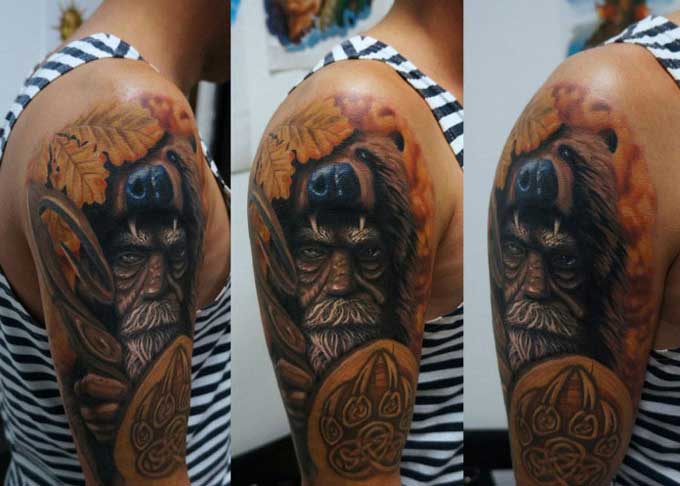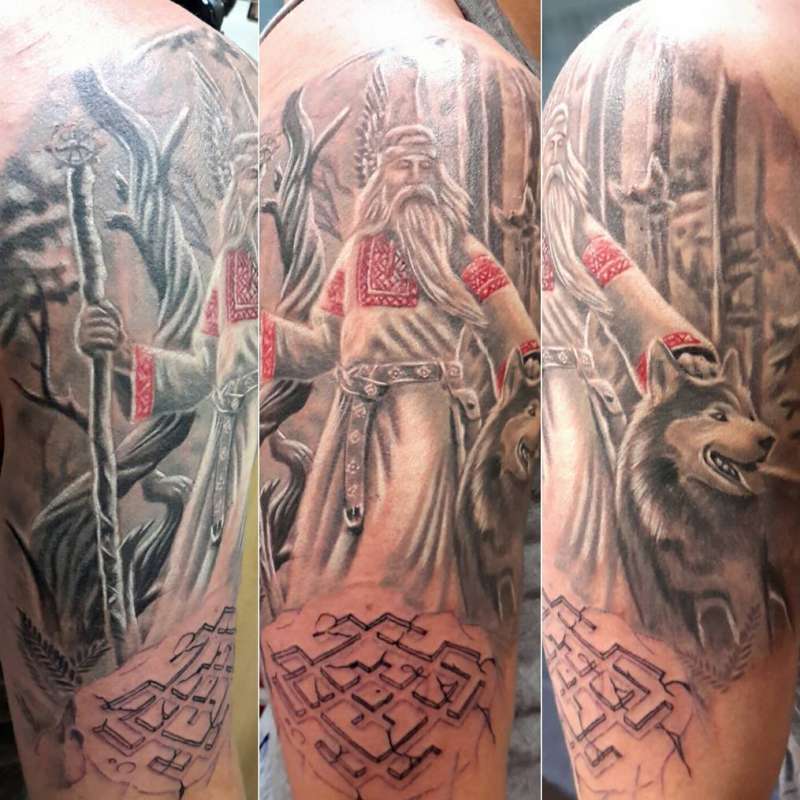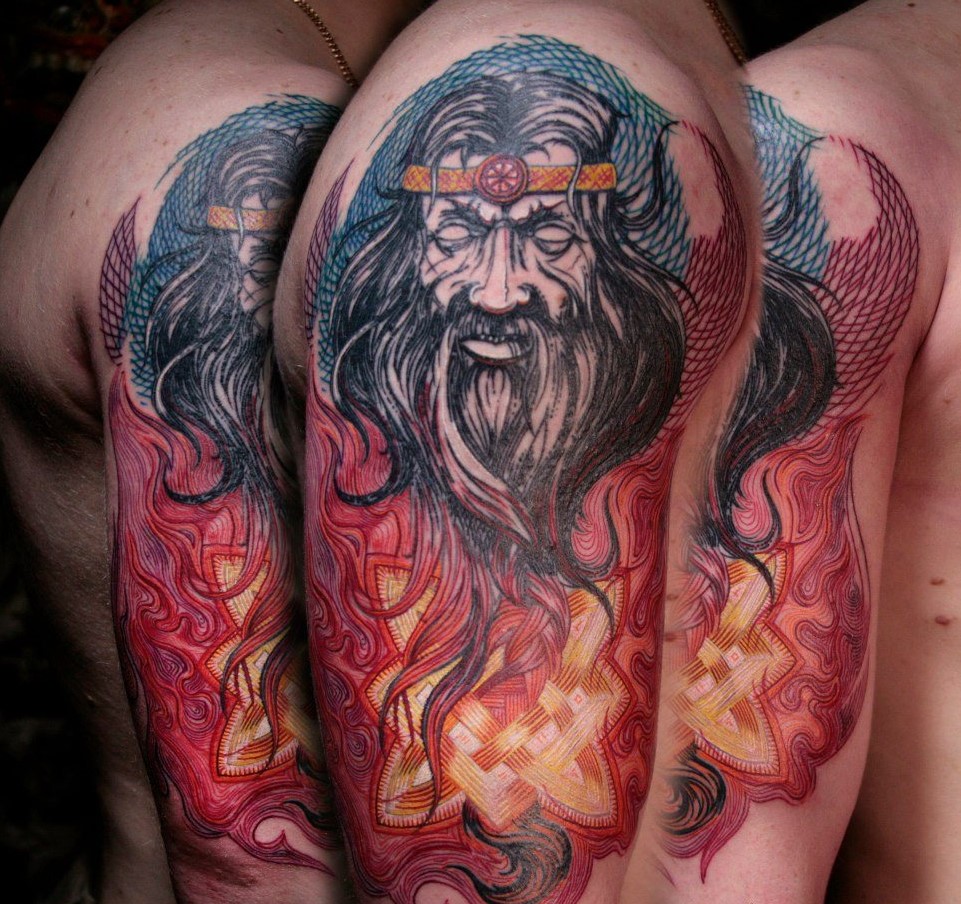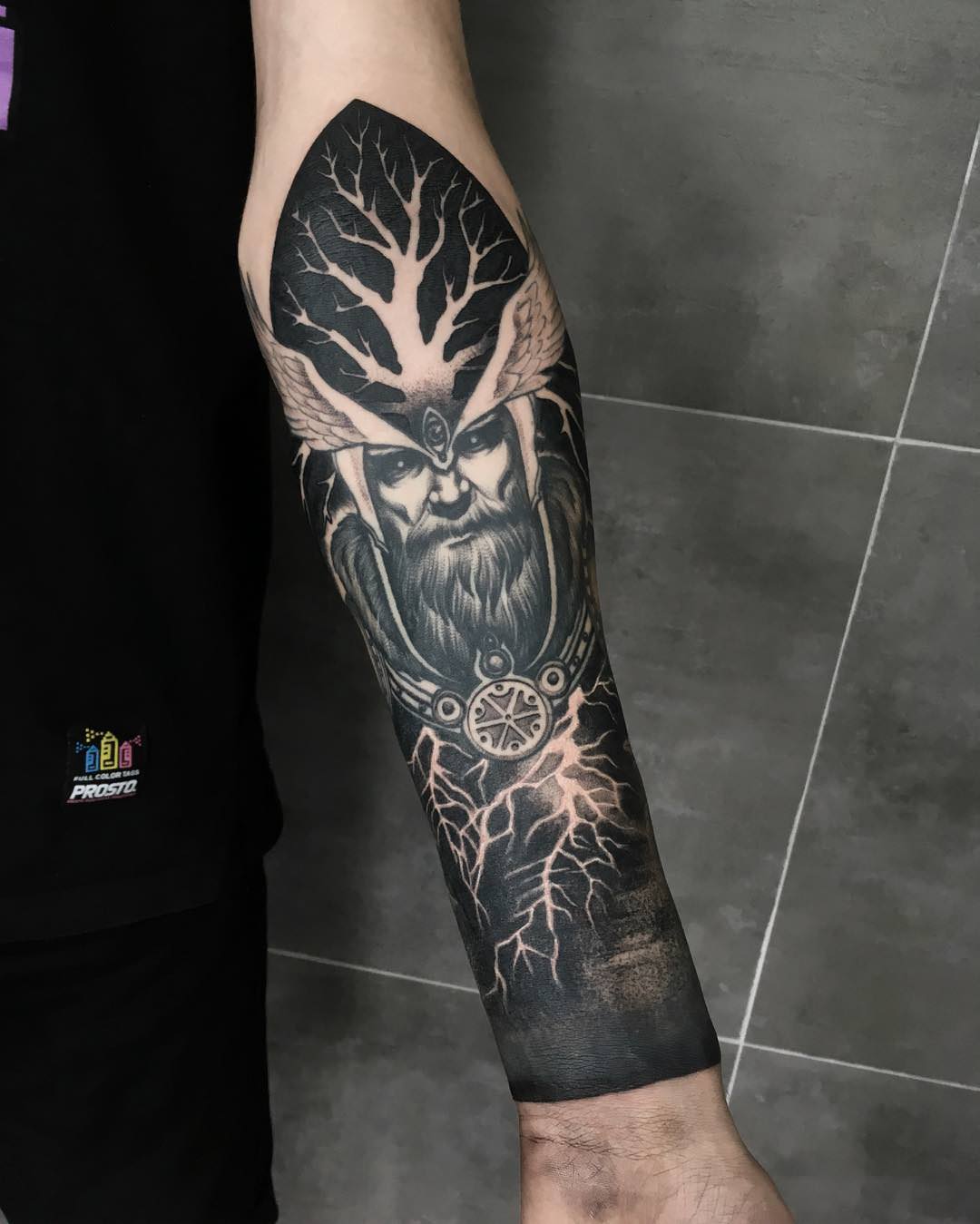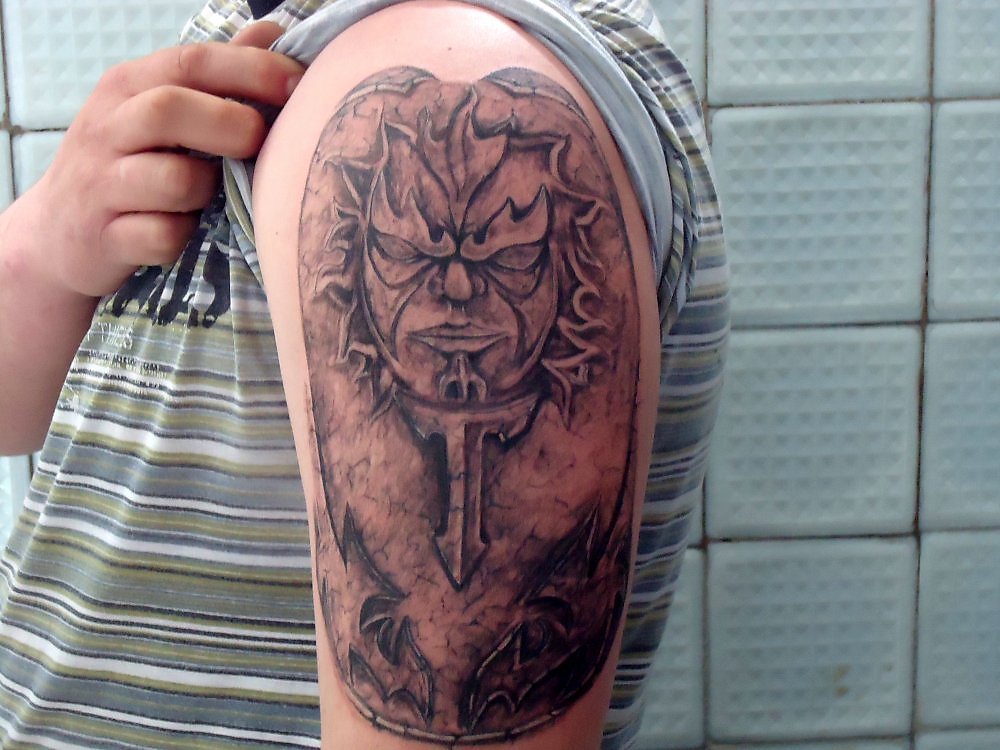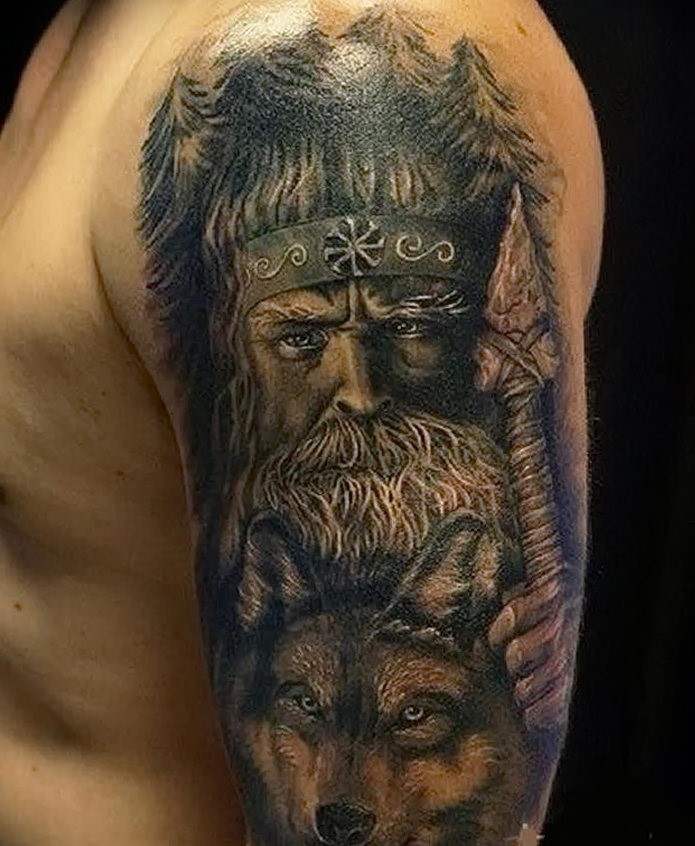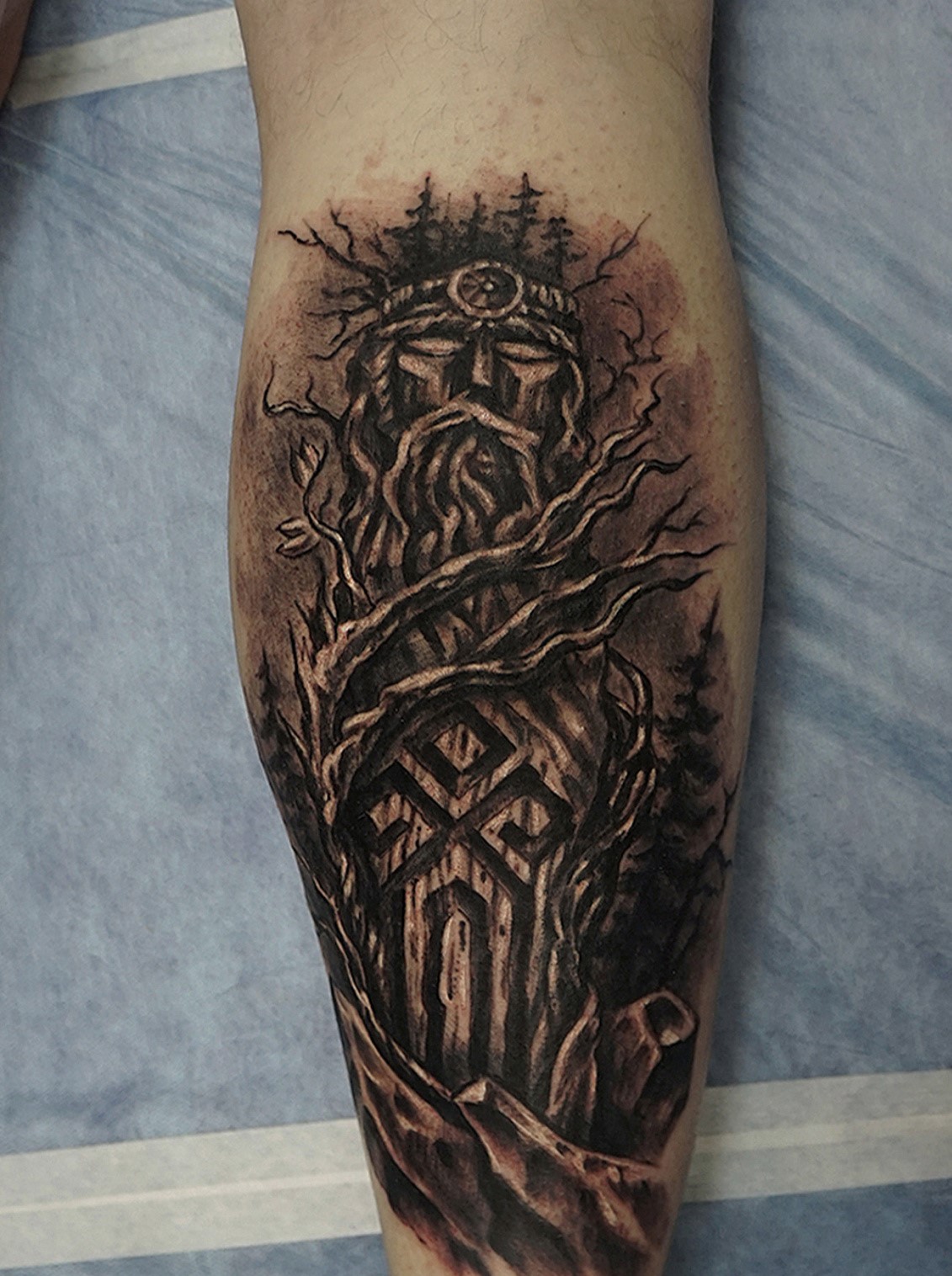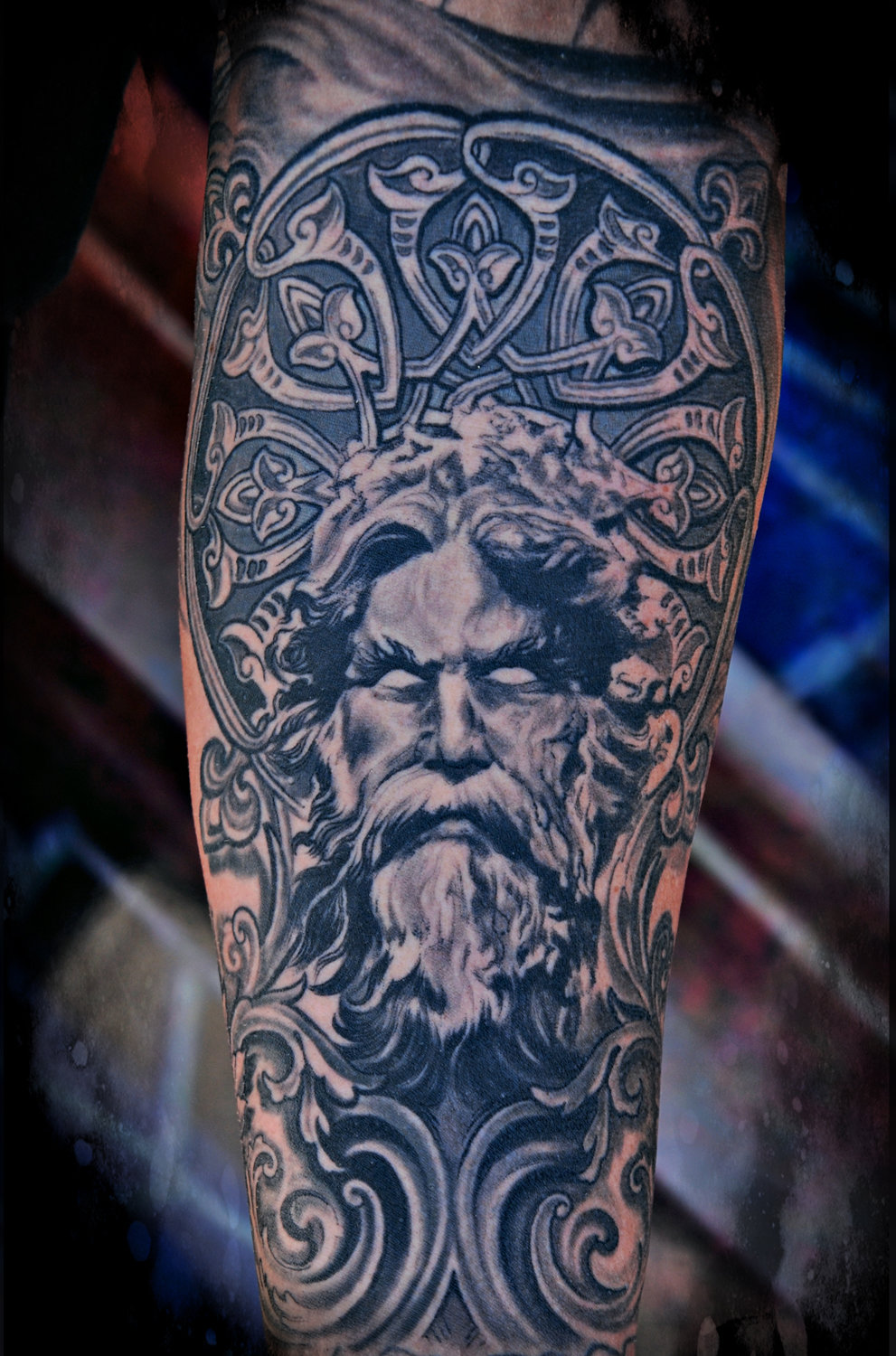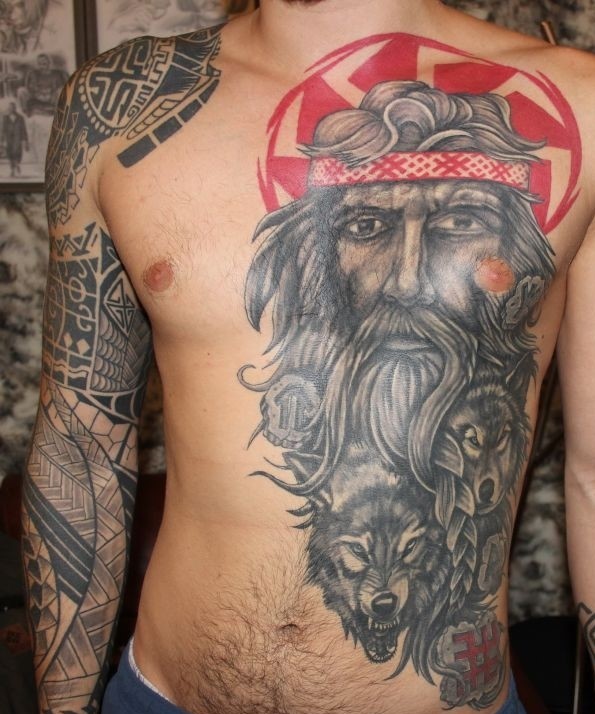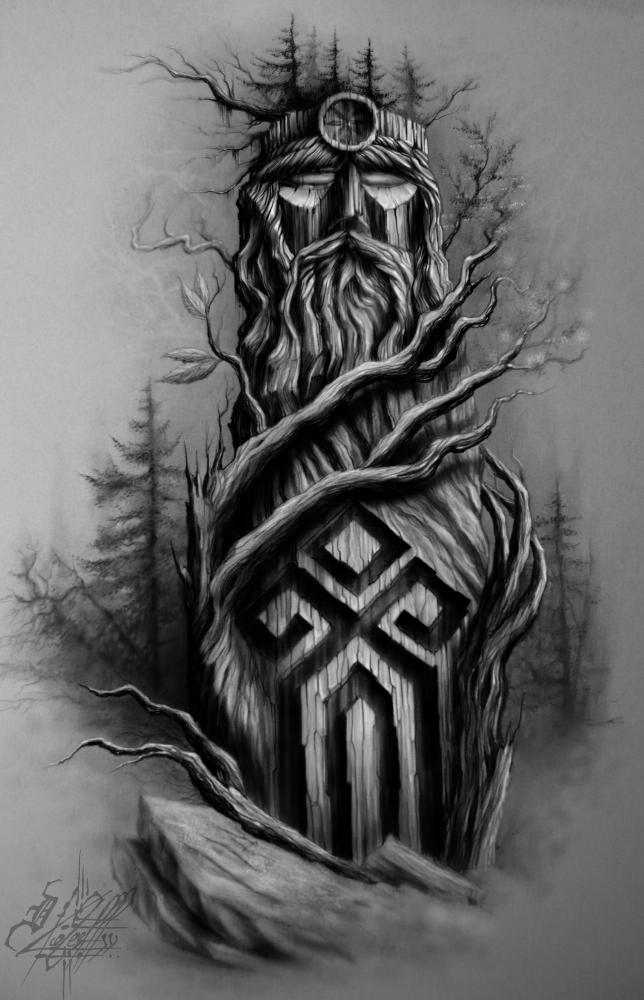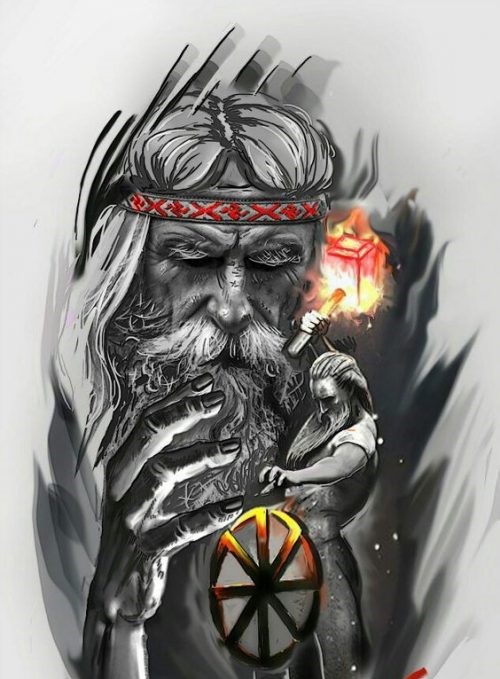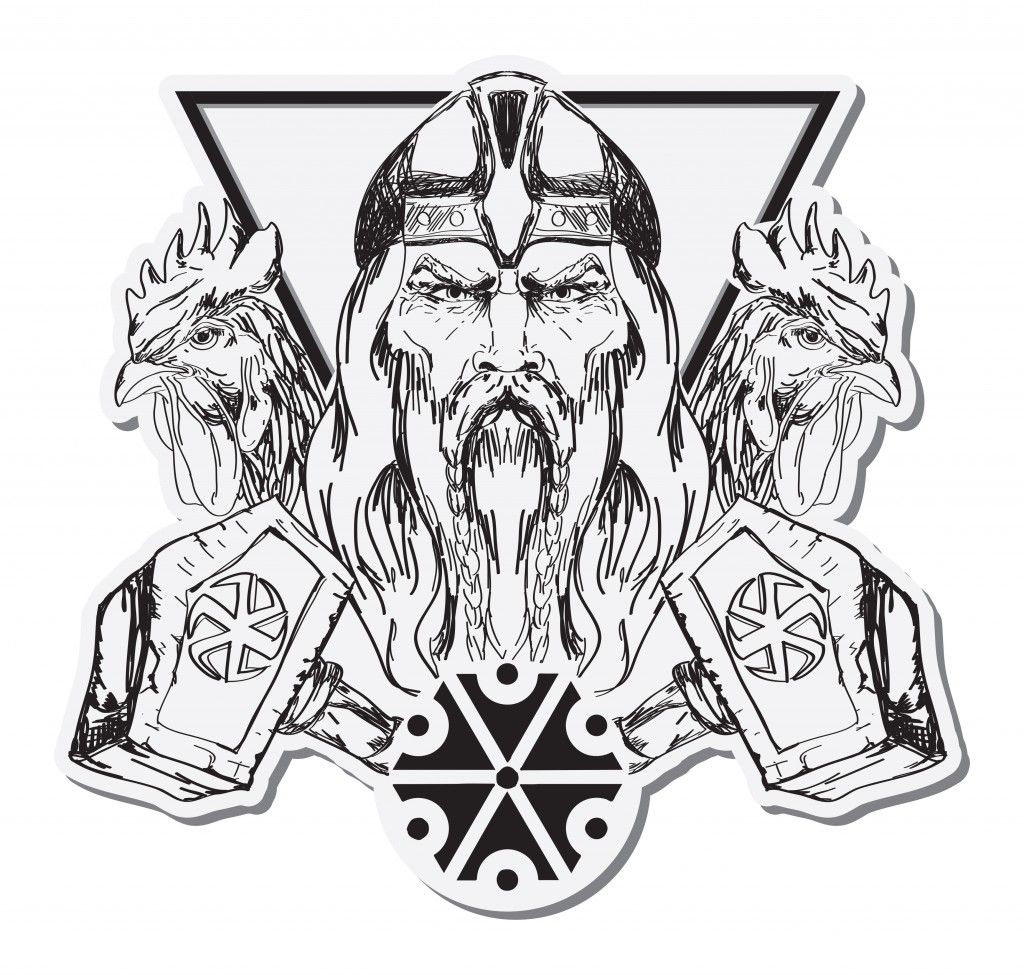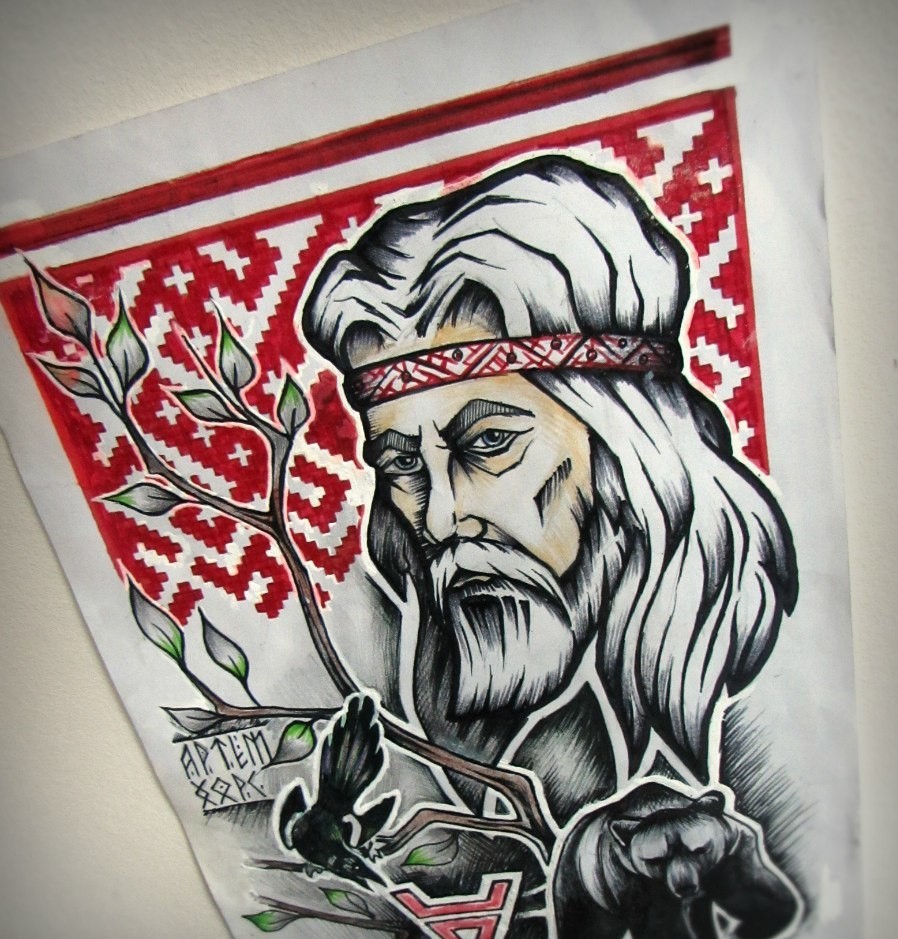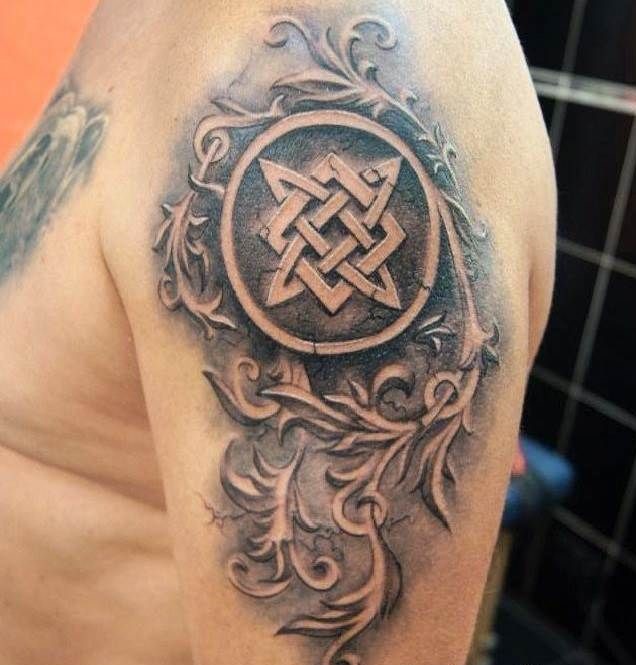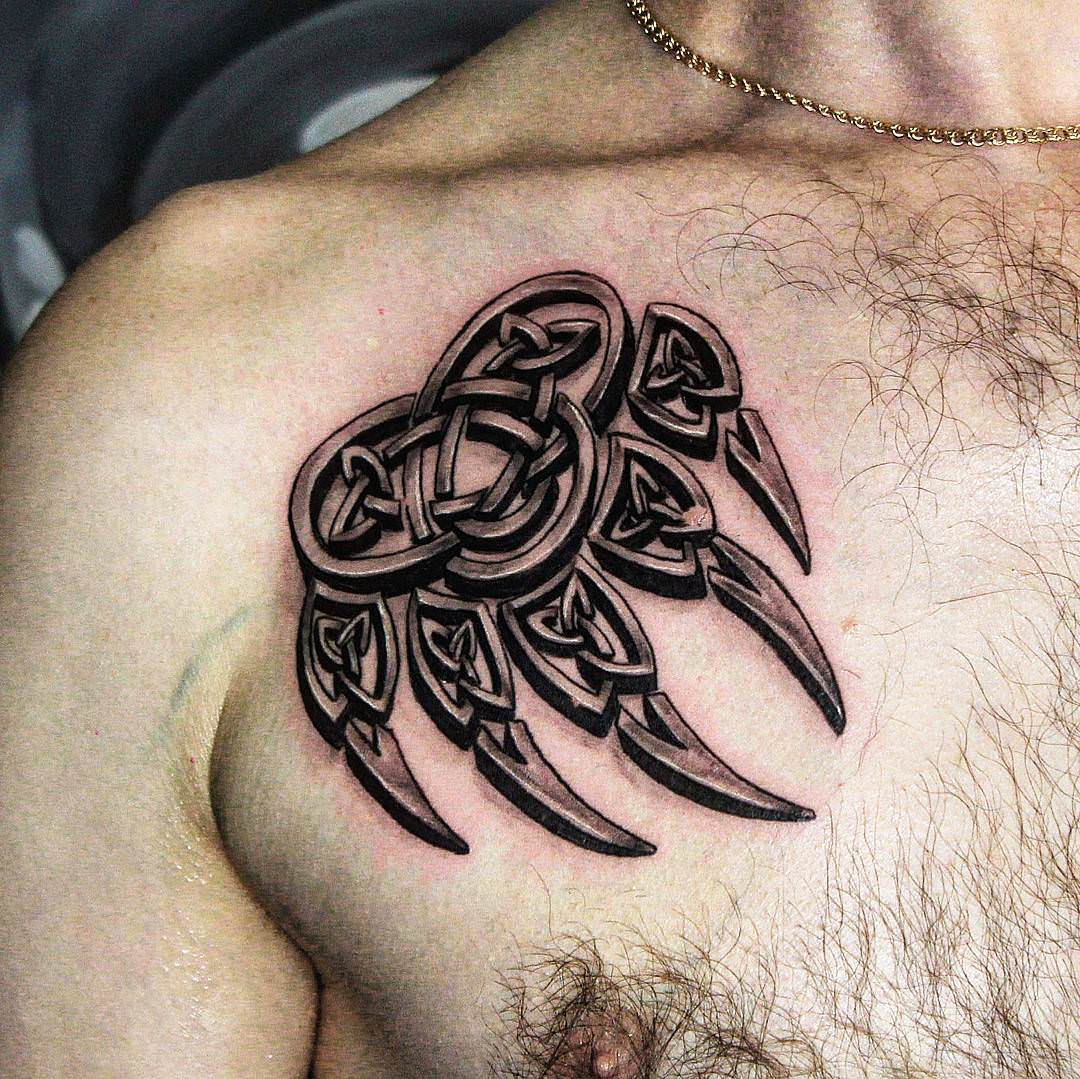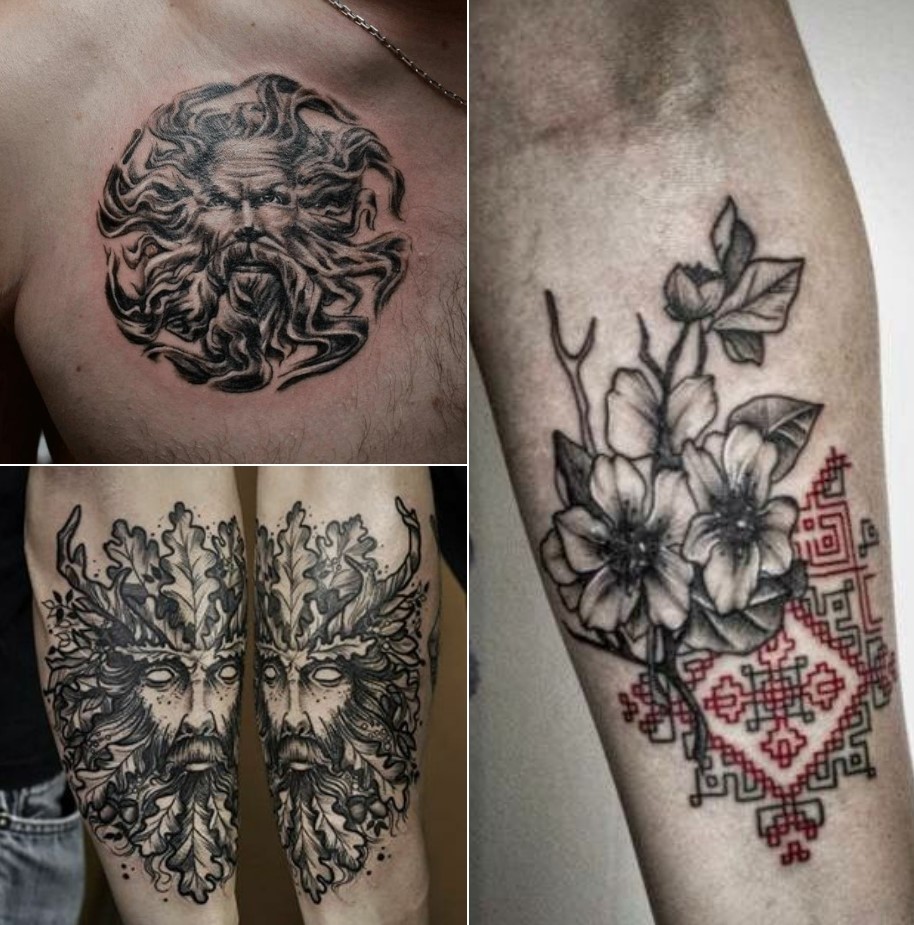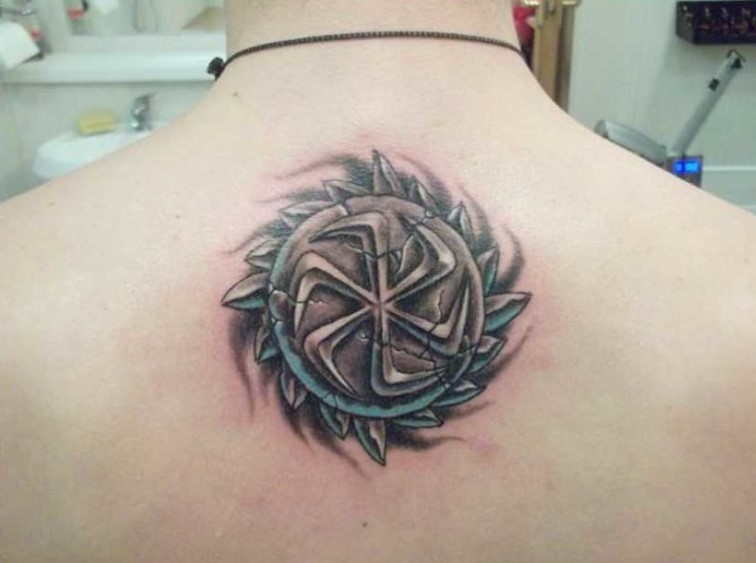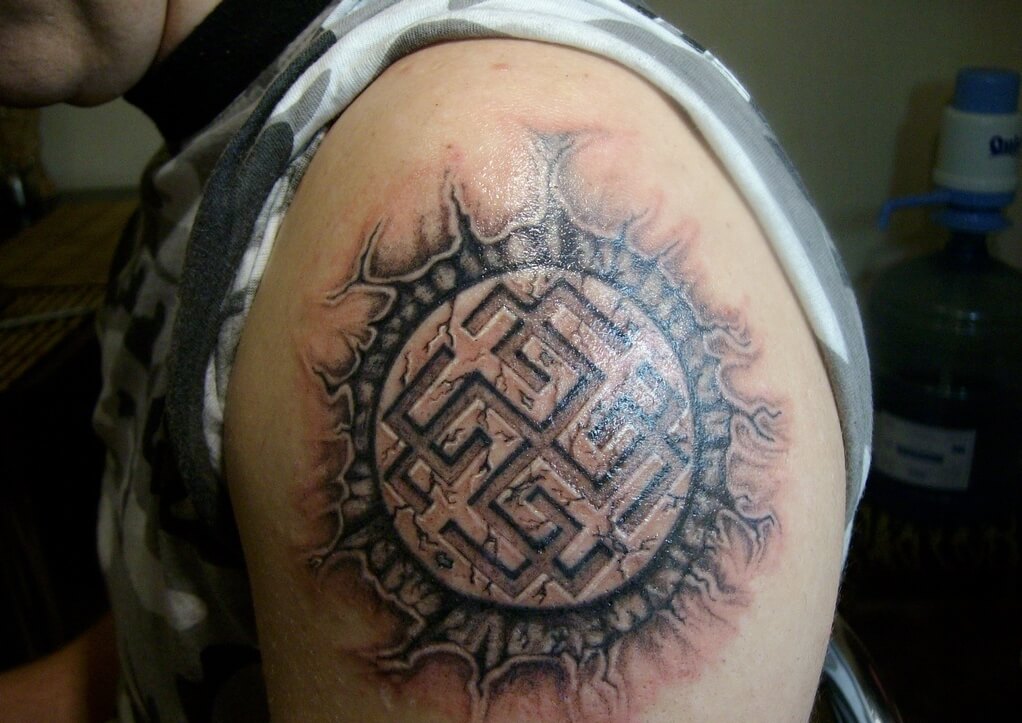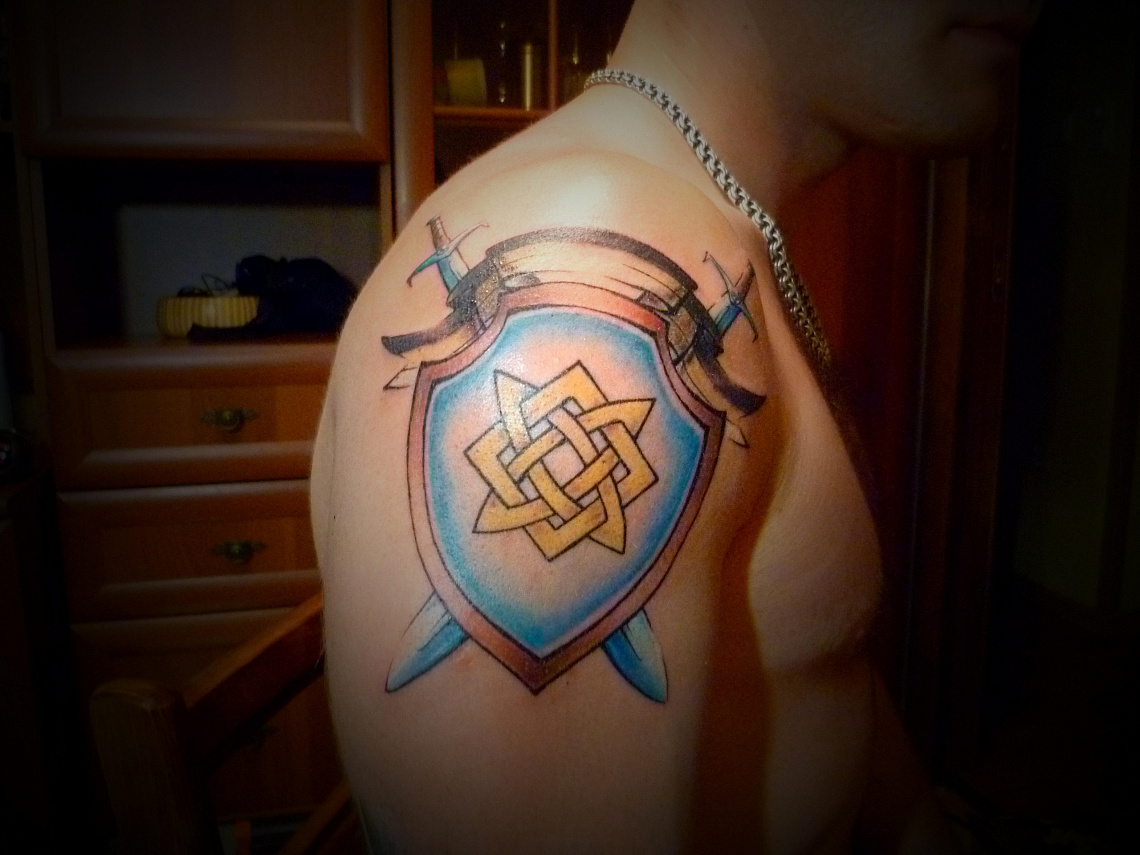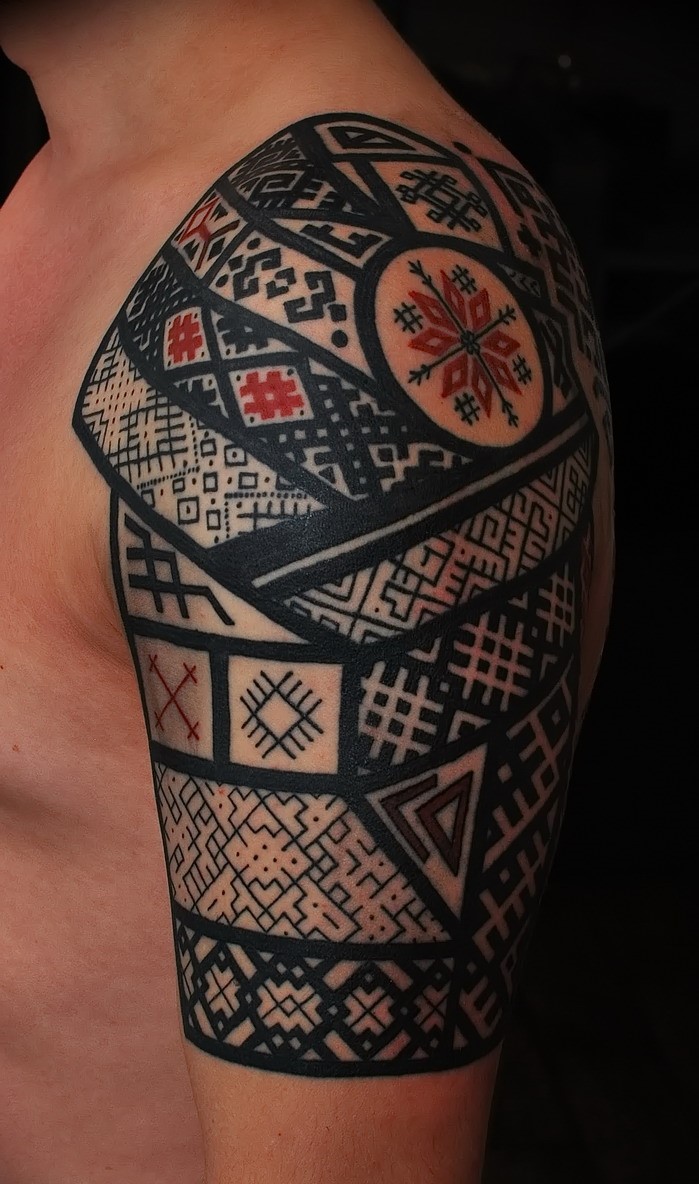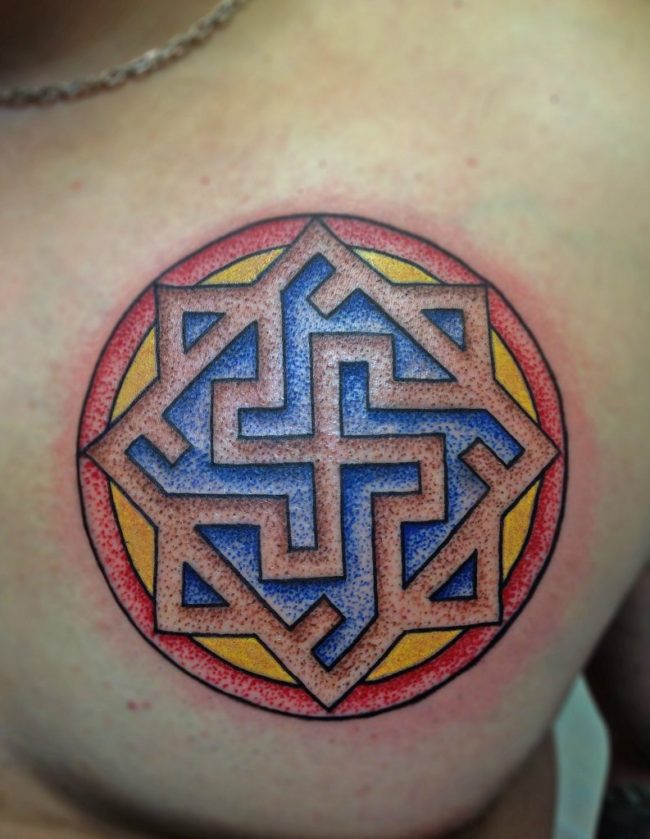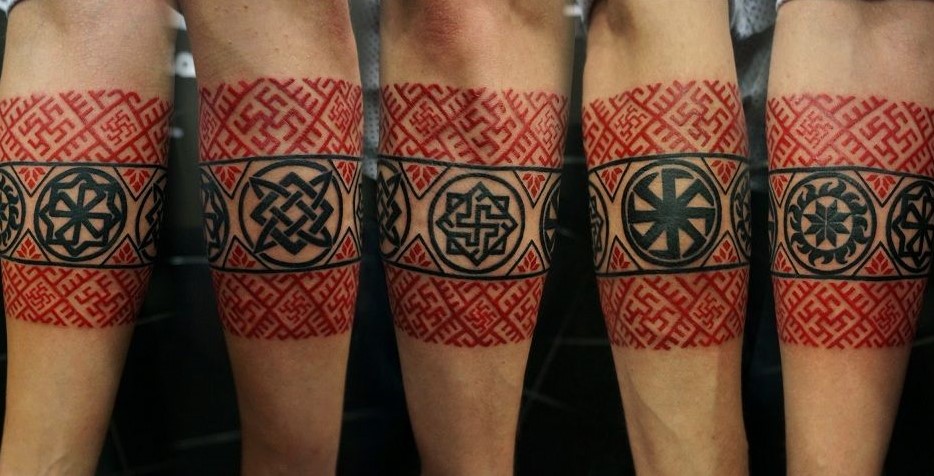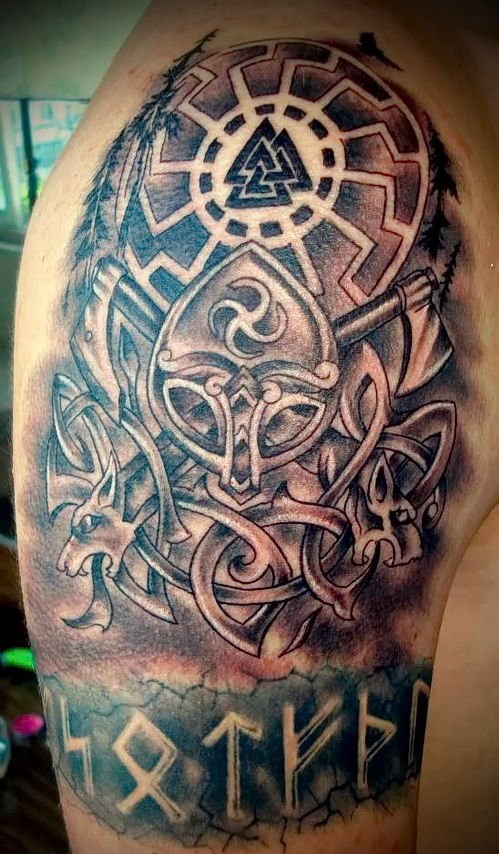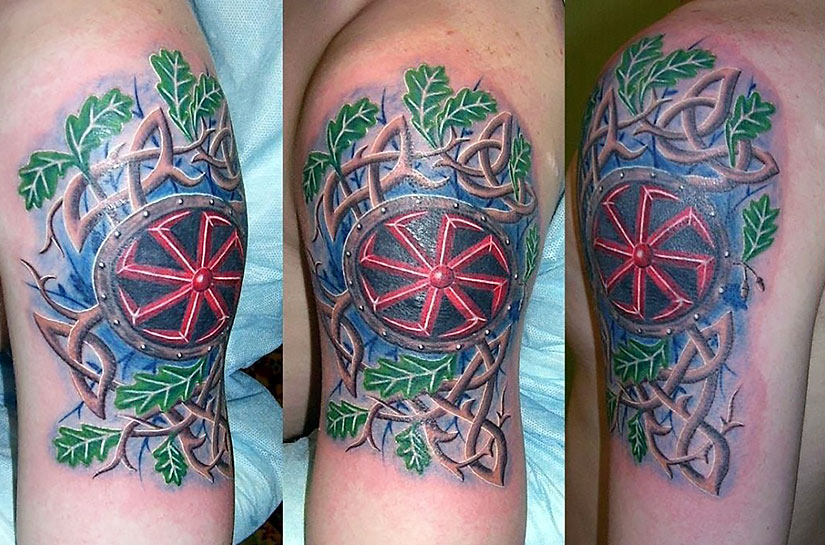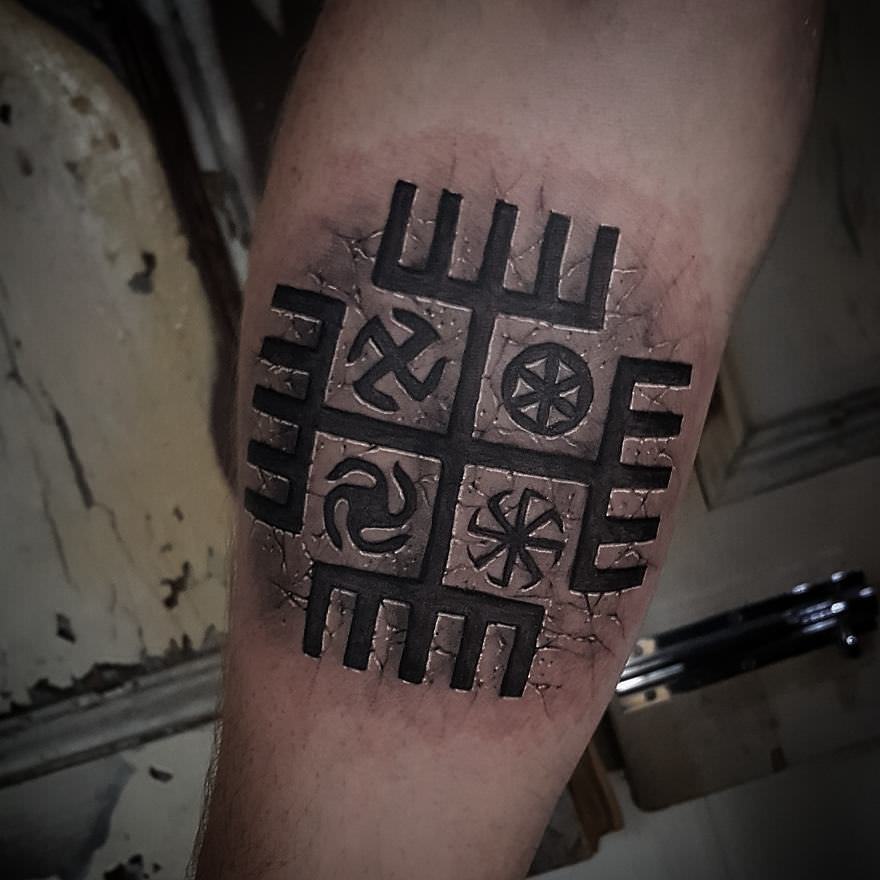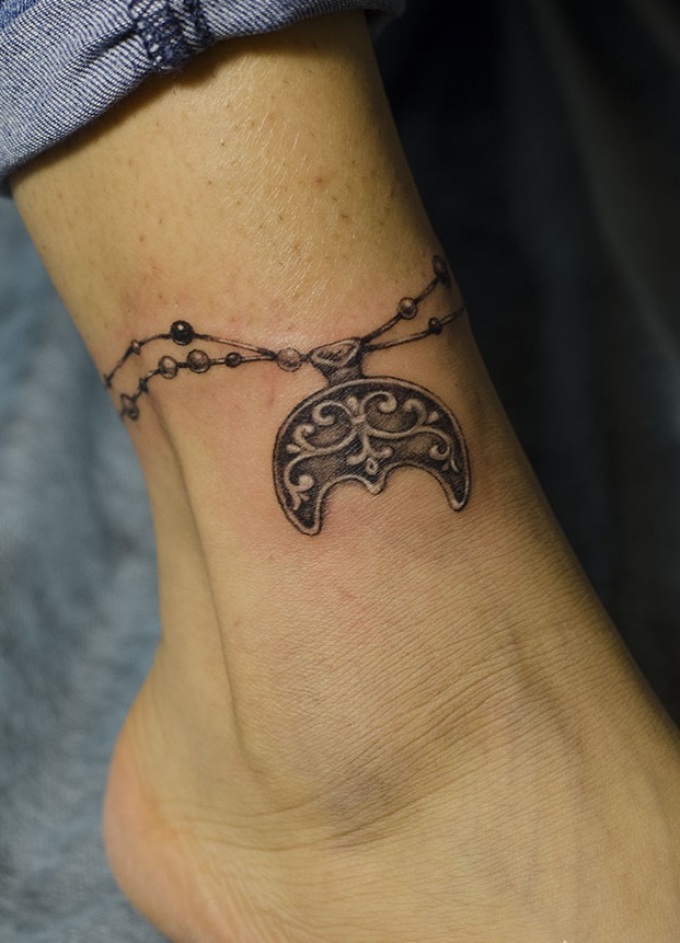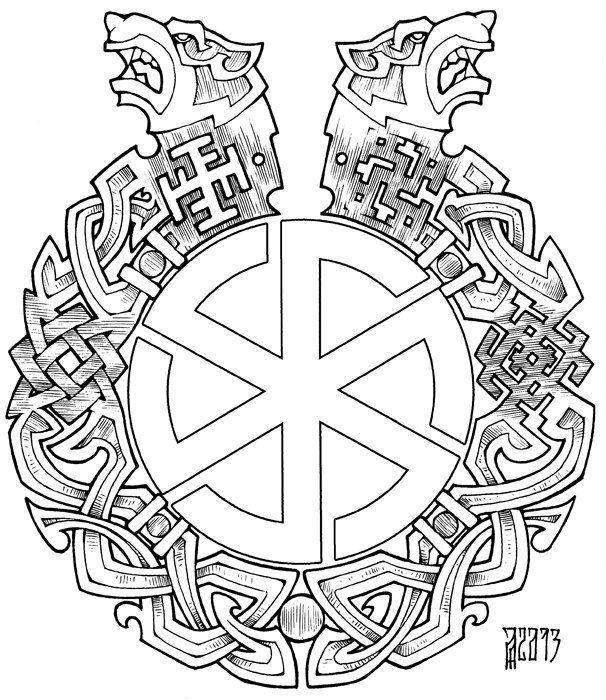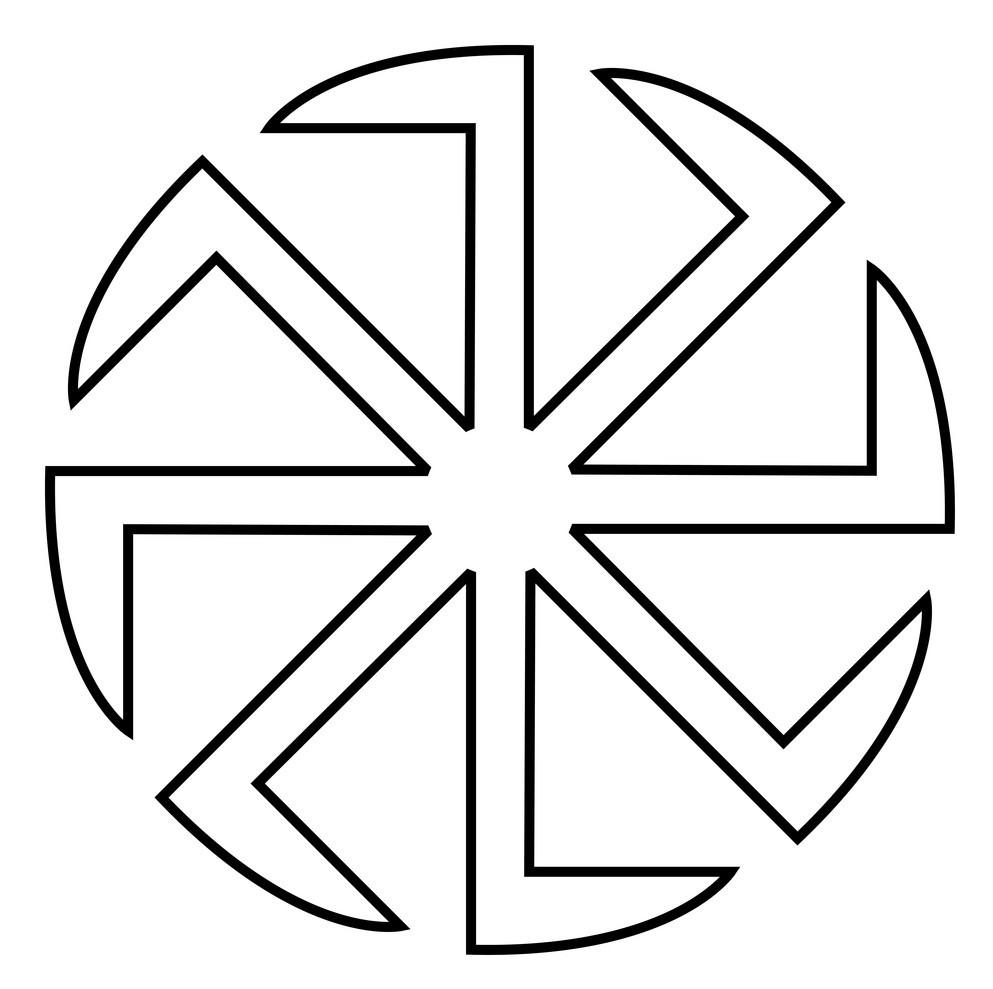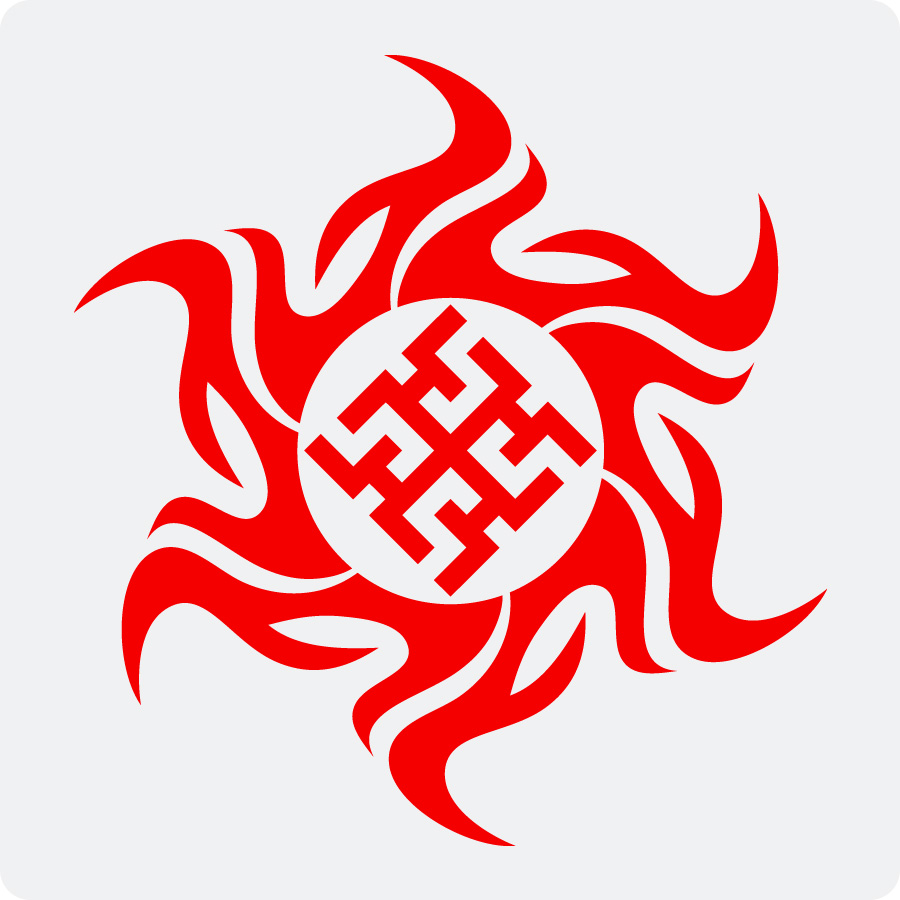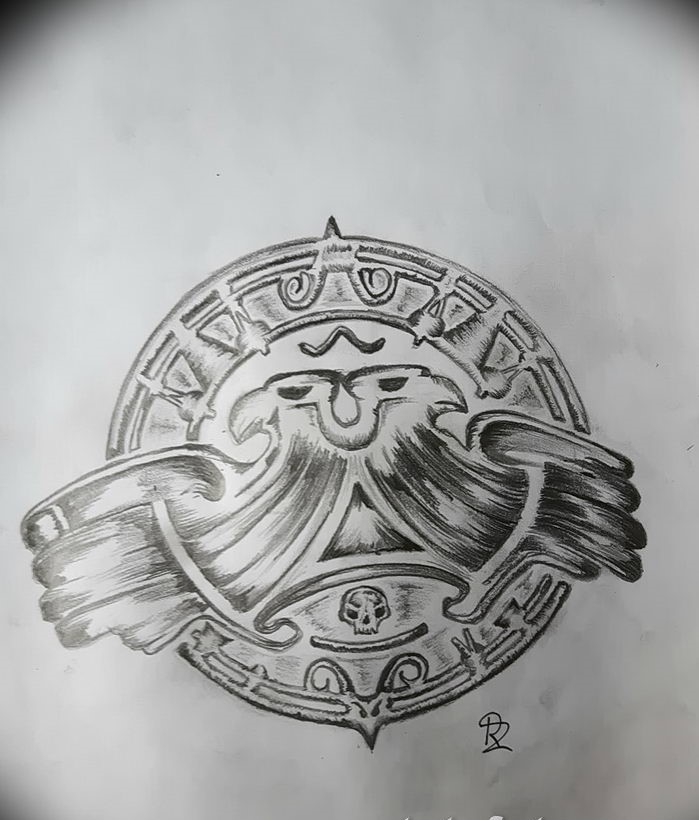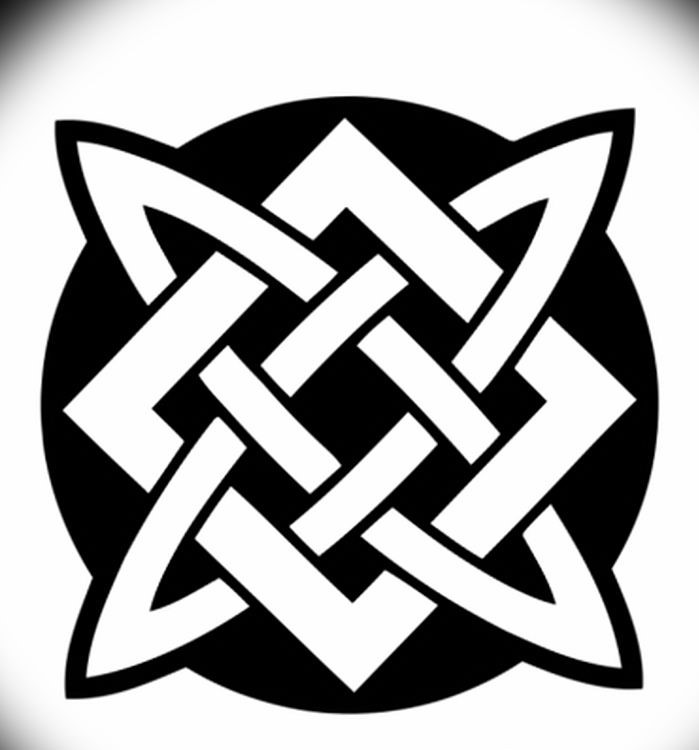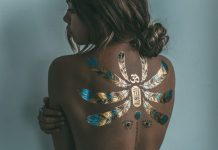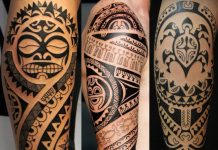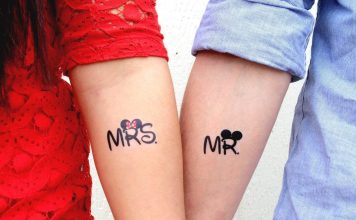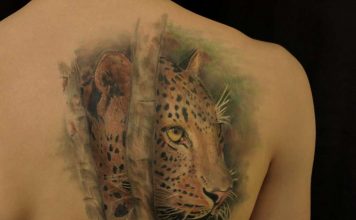Tattooing is an art form with which you can decorate your body by expressing originality and individuality. Among the many techniques of performance and sketches, anyone can choose the best option, which makes the tattoo so popular in the modern world. Of particular value and importance are the ancient tattoos that came to us from our ancestors. One of these types of images are Slavic tattoos that have an infinite number of sketches and meanings.
Slavic tattoos: history
Unfortunately, it is impossible to know for sure whether our ancestors used wearable images, since none of the ancient Slavic burials was maintained at the proper level. If scientists are to be believed, they do not reject the idea that the custom of applying a tattoo on the body of the ancient Slavs did take place. Moreover, archaeologists systematically find during excavations facts supporting this theory and its correctness.
For example, in a ten century, the Arab traveler described that he had met a people located near the Volga River. All its locals were decorated with bodily images of plants and animals, with tattoos on them from head to toe. Argued that these wearable images were ritual and ceremonial in nature, served as a guardian. Scientists believe that all these charms contained tremendous sacral significance and were used only by priests and magicians in a state of trance. It is also believed that the tattoo had to be earned, to reach a certain status and age. At the same time, warriors were decorated with warriors, so that nature and luck accompanied them, the old people used tattoos to activate their vitality, and the sick to recover.
With the advent of Christianity, pagan tattoos were banned, they were considered a symbol of the demonic principle. At the same time, this religion gave a new impetus to the development of Slavic tattoos, because now among the popular wearable images were crosses, the initials of Jesus Christ and other religious symbols. The main reason for the popularity of Slavic tattoos nowadays is their huge hidden meaning and energy that can bring good luck to a person, make him stronger and more durable. For example, the researchers found elders, on whose bodies a chessboard is depicted - this is an ancient custom, symbolizing a series of dark and light stripes, the inevitability of their change.
Slavic tattoos and their features
The distinctive features of the Slavic tattoo include:
- They have a close relationship with Celtic and Scythian ornaments. As for the Slavic ornament - these are interconnected points, commas, rhombuses, crosses and spirals. In the future, the Slavic ornament was supplemented and drawings of flower garlands, hearts, crowns and floral patterns appeared.
- Plots, motifs and images of characters from Russian fairy tales, songs and folk tales are used to create tattoos.
- The composition is often supplemented with a book ornament, which intertwines the original Russian and Christian traditions in the set.
- Slavic tattoos often include elements of painting by famous artists of Russia, for example, Vasilyev and Vasnetsov. No less popular idea - painting the body under Khokhloma, Gzhel or Palekh.
- Among modern Slavic tattoos, amulets, runes and deities, as well as stylized images of a dragon and a lion are especially popular.
Slavic tattoos: runes, their sketches and meanings
Since ancient times, it was believed that runes (tamgas) are special characters that have magic power, therefore, it is strictly forbidden to put a mark on the body without knowing its exact meaning. Runic writing attracts modern men and women for its originality, mystery and beauty, while the runes can be used as an independent tattoo or part of the composition.
In general, any rune includes three elements, the combination of which affects the total value of the tattoo:
- The world is divine protection, a symbol of people striving for order.
- Alatyr - the world balance, the center between order and chaos.
- Chernobog - a negative sign, symbolizing the craving for chaos, destruction and destruction.
- Rainbow - a symbol of good luck for travelers, facilitates not only the physical, but also the way of life.
- Need - the rune of darkness and death, stiffness, and also symbolizes the absence of freedom.
- Treba - self-sacrifice to the gods.
- Krada is a symbol of sacrificial fire, demonstrating the sincerity of intentions.
- Strength - based on the name is not difficult to guess that this is a symbol of warriors, personifying power and victory.
- There is a symbol of life and its variability.
- The wind is a symbol of creative people.
- Rock, support, beats, etc.
Slavic tattoos: deities, their sketches and meanings
Images of Slavic gods, stylized as strong courageous and strong men that look like Varyag, are no less popular:
- Perun - thunderer.
- Svarog - the god of the blacksmith.
- Stribog - god of wind and atmospheric phenomena.
- Veles is the god of creativity and poetry.
- Dazhbog - the solar god of fertility.
Tattoo Slavic amulets: values and sketches
If we take into account all the Slavic tattoos, then it can be noted that charms were of particular importance, because they have a protective function, protect people from various troubles and tribulations. Among the popular Slavic amulets are the following options for tattoos:
- Svarozhich - protection against liquidation.
- The Goddess is a symbol of self-improvement.
- Valkyrie - honor and nobility, the ability to protect his own home, family.
- Bogodar - the personification of justice and wisdom.
- Znich - infinite energy.
- Ratiborets - a symbol of courageous guys, warriors by nature.
- Weddings - family talisman.
- Rysych - protects from evil spirits.
- The celestial boar protects a person who wants to know himself and achieve harmony.
- Overcome the grass - protects against disease.
- Fache - guards against ignorance and selfishness.
- Stribozhich - guard against troubles and failures.
- Colard - for couples, allows you to give birth to healthy heirs.
- Ognevica - used by married women.
- Sadhana - will bring success in all endeavors and direct you to the right path leading to perfection.
- Other.


